




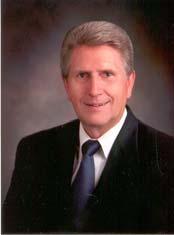 David Harmer Executive Director
dharmer@utah.gov
David Harmer Executive Director
dharmer@utah.gov
The Utah Department of Community and Economic Development promotes job creation, facilitates infrastructure development, and enhances quality of life.
The Department of Community and Economic Development’s (DCED) employees are working hard to create high–paying jobs in Utah and improve the state’s infrastructure and quality of life. We provide services and technical support to many different customers from businesses to local governments to tourists to low-income residents. Our agencies are perhaps the most diverse in state government.
Eleven companies announced expansions in Utah in the last fiscal year, creating nearly 2,000 new jobs. The companies include: Lozier Corporation, Fleetguard, Burly Seal Products Co., Orgill, Inc., Cephalon, Working RX, Inc., and Cabelas. The Division of Business and Economic Development (DBED) conducted 22 site visits. The International Business Development Office wrapped up the post Olympic Utah! Trade Missions with visits to Doha, Qatar; Vancouver, British Columbia; and Beijing and Shanghai, China. These international visits have proven successful for Utah companies that are competing in the global marketplace. A total of 17 companies received incentives from the Industrial Assistance Fund, creating nearly 3,500 quality jobs and generating a potential $123 million in new tax dollars.
Tourism remains a vital economic force and a revenue generator for the state. In 2003, Utah attracted 16.9 million non-resident visitors who spent $4.21 billion. The tourism industry generated $334 million in tax revenues. Unfortunately, Utah tourism has lost market share in recent years due to inadequate funding to promote and brand the state.
The Division of Housing and Community Development added housing to its name this year to increase the awareness of the need for more affordable housing in Utah. The Olene Walker Housing Loan Fund awarded $5.98 million in loans and grants during FY 2004. The Permanent Community Impact Fund Board awarded more than $25.2 million for 66 projects in Utah, including improvements to buildings and water and sewer systems. The ethnic offices are also housed in this division to work closely with state agencies to meet the needs of the state’s minority populations.
The Utah Arts Council awarded more than $1 million in grants to 200 nonprofit organizations in 51 communities statewide. The Division of State History added new materials to its collection, including books and photographs to preserve Utah’s past. History’s research library served more than 8,200 patrons and an average of 39,000 patrons are visiting the Historytogo.utah.gov Web site every month. The Division of State Library is also using technology to serve its patrons. The Radio Reading Service for the Blind and Disabled is now digital. Utah’s online library, Public PIONEER (Pioneer.utah.gov), had 373,000 visitors who accessed full-text magazines, newspapers and other resources.
Despite limited advertising budgets, the department will continue its efforts to promote the Utah! brand and improve Utah’s economy and cultural infrastructure.
David G. HarmerThe mission of the Division of Business and Economic Development is to facilitate the growth of quality jobs, promote Utah business, develop economic prosperity and enhance the quality of life for the citizens of Utah.















The Office of Technology and Science has been assigned responsibility for the creation, implementation and ongoing support of activities designed to promote the health and vibrancy of the state’s technology-based business sector. Specific programmatic activities within the office include the Utah Technology Alliance, the State Centers of Excellence program, the Office of the State Science Advisor, and the Technology@Breakfast program.
The UTA seeks to accelerate Utah’s emergence as a center for technology investment, employment, and entrepreneurship. It seeks to:
• Foster a business climate that enables homegrown Utah technology companies to prosper and create jobs that pay higher than prevailing wages.
• Create mechanisms that overcome inhibitors of income growth.
• Attract anchor technology companies that can create jobs in Utah paying than prevailing wages and that can further enhance Utah's business climate.
Specifically, the UTA is emphasizing the development of Utah’s brand as a key factor in attracting capitol, anchor companies, and experienced management; developing Economic Ecosystems; and establishing the Utah Technology Industry Council to provide direction.
• The Alliance continues the development of Economic Ecosystems by establishing new Ecosystem working groups and industry associations in those industries where an association does not currently exist.
• The Alliance assisted in the establishment of the Utah Technology Industry Council (UTIC) as provided in Senate Bill 151. UTIC gives technology industry leaders a formal method for recommending policy changes and legislative initiatives and for communicating industry concerns directly to the legislature. The director of the Utah Technology Alliance serves as a member of the UTIC Steering Committee, which has been commissioned to create the UTIC charter, nominate members for the full council, and to provide recommendations to the legislature for the upcoming 2005 session.
• Staff continues to assist in the implementation of the Utah Fund of Funds legislation (HB240). The Fund of Funds will provide new investment capital to venture capital groups committed to investing in Utah-based technology companies. The Alliance also played a major role in defining the new legislation and providing advice and counsel to the legislators sponsoring the bill.
The Office of Technology and Science provides administrative support for all activities in the department related to tech-based economic development, including the commercialization of research technologies developed in our universities and advocacy/support for the technology business community. techalliance.utah.gov
• UTA strengthened its Alliance Outreach by
1. Strengthening the Friends of Utah network; staff planned and participated in domestic and international trade missions scheduled in 2004.
2. Support the outreach effort called the Technology@Breakfast program, a networking opportunity for industry leaders, academics, professionals, and state officials, who gather at breakfast and hear presentations on timely, technology-related issues.
• The Alliance continues to provide financial and staff support to the community of nonprofit business accelerators. These groups provide support services to the high technology business community that cannot reasonably be provided by state government. A sample of these groups includes:
1. Utah Information Technology Association (UITA)
2. Utah Life Sciences Association (ULSA)
3. Wayne Brown Institute
4. Technology to Market (T2M)
5. Utah Manufacturing Extension Partnership
The purpose of the Office of Technology and Science’s Utah Centers of Excellence Program is to promote the creation, development, and expansion of technology-based businesses and industry. To accomplish this, the goals include:
· Maximizing the economic impact of research and development performed at Utah’s universities.
· Facilitating the licensing of mature technologies to Utah businesses.
· Encouraging the establishment and growth of Utah businesses based on new and developing technologies.
· Promoting the availability and use of technical and capital resources for Utah’s technology based businesses.
Through the fiscal year, the Office of Technology and Science’s Utah Centers of Excellence Program leveraged a cumulative state investment of $37.7 million with non-state matching funds totaling more than $397 million. To date, the program was responsible for the creation of:
• 153 new high technology companies
• 184 new patents either issued or pending
• 216 licenses signed between businesses and Utah universities
• Over 10.5:1 cumulative match ratio
The Utah Centers of Excellence Program, widely regarded as one of the nation’s most productive and successful programs of its type, sponsors the development and commercialization of technologies currently being researched at Utah’s universities. By helping to introduce these commercially important new products, the Centers program plays a vital role in the growth of Utah’s high-technology economy.
During the fiscal year, the Centers program continued to manage an annual legislative appropriation of $2 million. New appointees to the Centers advisory council have strengthened the technical expertise of the council. Expanded consulting services provided to Center directors have greatly improved the commercialization opportunities for funded Centers. Planning grants have been reduced from $10,000 to $5,000 to fund more potential Centers with greater focus on market analysis.
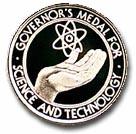
The State Science Advisor, appointed by the governor, provides advice and counsel on science and technology issues to the governor, state Legislature, and other state agencies. The Science Advisor serves on a broad range of boards and commissions pursuant to the oversight of key scientific initiatives, research efforts, federal and state mandates, and on-going programs devoted to science and technology issues. The Science Advisor has specific responsibility to supervise or participate in the following key areas:
The State Science Advisor and Advisory Council on Science and Technology (SAC) review significant advances in science and technology and advise and make recommendations to the governor, Legislature and governmental agencies on the use of science and technology to foster scientific literacy and to strengthen the state's economy, educational system and quality of life. The State Science Advisor serves as an ex-officio member of the council and provides staff support for all council activities and initiatives.
The state of Utah has chosen the Governor's Medal as a symbol of recognition for those individuals who have provided distinguished service in the fields of science and technology.
The Governor’s Medal award program was initiated in 1987 to recognize those that made career achievements and/or provided distinguished service that has benefited the State of Utah in the areas of Science and Technology. Specific criteria were developed to determine the significance of the contributions to the economic development of the state. Initially, nominations were solicited from four general categories: Academia, Science Education, Industry and Government. A separate Special Category has been added to recognize individuals that may not meet all of the specific criteria but whose accomplishments merit recognition for this award. The Special Category nominations are by invitation of the Council or Governor only. The State Science Advisor has management responsibility for the Governor’s Medal program.




State Science Advisor, Dr. Michael Keene, presents a Governor’s Medal for Science and Technology.
The Utah Citizens Advisory Commission on Chemical Weapons Demilitarization provides a means for exchange of information between the Department of the Army's Chemical Weapons Demilitarization Program and the State of Utah and its citizens. The Commission evaluates information on issues related to the Chemical Weapons Demilitarization Program and advises governing authorities in the State with respect to the health and safety, risks and benefits to the citizens of Utah. The State Science Advisor serves as a member of the CAC and provides staff support.
Goals:
The mission of the State of Utah International Business Development Office is to build Utah’s global economy and international presence.
· To develop and expand foreign markets for Utah good and services
· To increase the level of Utah exports
· To successfully attract global investments to Utah
· To serve as an international resource for the entire state of Utah
· To increase worldwide awareness of the Utah! brand
Continuing the post Olympic Utah! Trade Mission initiative, Governor Leavitt and Governor Walker, along with the International Office, hosted trade missions to the following cities:
· Doha, Qatar – October 4-9, 2003
· Vancouver, Canada – March 30-April 2, 2004
· Beijing & Shanghai, China – April 19-29, 2004
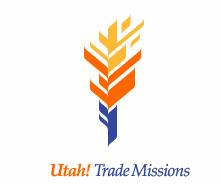
The trade missions included a variety of Utah businesses and resulted in the establishment of valuable international business connections, increased awareness of Utah, promotion of Utah’s economic ecosystems and expansion of Utah’s network of alliances. The International Office is grateful for sponsorship of the Utah! Trade Missions by Delta Airlines and Zions Bank.
The International Business Development Office maintains a global network of 11 Utah International Trade Representatives and six Honorary Trade Representatives to provide in-country services for Utah businesses. The office named Jussi Kemppainen as its first Honorary Trade Representative in Finland, Andre Forsberg the first Honorary Trade Representative in Norway, and William Landels as the first Honorary Trade Representative in Scotland.





The office introduced Utah companies to targeted overseas markets by attending industry trade shows throughout the world; EXPOMIN Trade Show in Santiago, Chile; TELEXPO Telecommunications Trade Show in Sao Paulo, Brazil; CEBIT International IT Trade Show in Shanghai, China; ENVIRO-PRO Trade Show in Mexico City, Mexico; GLOBE 2004 Environmental Trade Show in Vancouver, Canada; Hong Kong Electronics Fair in Hong Kong, China; and the Salt Lake Chamber’s Business to Business Expo in Salt Lake City, Utah.
The office hosted a re-organized International Week that included events every day of the week of May 17. International Week celebrated Utah’s global connections and focus on trade with 16 events planned with 14 international partners. An advertising campaign, logo, brochure and invitations resulted in record attendance.
The International Business Development Office hosted 14 international business seminars on trade topics to educate Utah companies about international business, increase statewide knowledge of international business opportunities and prepare companies to expand globally. Highlights included the International Lawyer’s Network Seminar, a “Doing Business in Hong Kong” breakfast seminar, an “International Regulations” seminar and seminars with Utah’s sister state Saarland, Germany. The “International Business on the Internet” seminar, attended by 85 individuals, was held at the Governor’s Mansion with opening remarks by Governor Walker.
The office arranges for Memoranda of Understanding to be signed between Utah and international governments to facilitate close business cooperation with foreign markets. Agreements were signed with the state of Veracruz, Mexico and the Chinese Yunan Province.
The International Office hosted nearly 90 incoming international officials, dignitaries and trade delegations, connecting them to Utah organizations, agencies, municipalities, educational institutions, businesses and individuals. Utahns were brought face-to-face with foreign officials to learn about business opportunities and global markets. Countries visiting Utah included Greece, Canada, France, Austria, Germany, Malaysia, China, South Korea, Brazil, Taiwan, the United Kingdom, Russia, Ireland, Bolivia, Ghana, Japan, Iceland, Scotland, Poland, Spain, Morocco, Mongolia, Mexico, Australia, Lebanon, Argentina, Belgium, Belarus, Lithuania, Finland, Tonga, Singapore, India, and the Maldives. Highlights included:
· A three-day visit by 20 high-level Chinese businesses and officials from the China Council for the Promotion of International Trade (CCPIT) that included 32 meetings with Utah businesses.
· A luncheon meeting for a large delegation of officials from Morocco who were visiting Utah as part of a State Department and Defense Department “State Partnership Program” which teams the state of Utah with the country of Morocco for cultural, humanitarian and trade opportunities.
· A four-day visit by the governor of Veracruz, Mexico, that included business visits, meetings with Governor Walker, the signing of a cooperation agreement and events with West Valley City and the Hispanic business community.
· A weeklong visit by 60 Chinese government officials as part of the Harvard University Kennedy School of Government China Leaders in Development Program. The delegation studied public policy in Utah, meeting with business and government officials.
International.utah.gov
Resources, market information, services and connections for Utah businesses and foreign investors can be found on the International Office’s website that is maintained and updated regularly. The website also documents photos and stories of International Office activities. The office also maintains a special website for trade missions. This year, the office conceived, designed and began production of a new website focused on an international audience. This site, the main international trade portal to Utah, will include the Utah International Trade Directory. The directory will allow Utah businesses to register their goods and services and self-update their information. Visitors will also find information about Utah’s economic sectors, reasons for choosing Utah, and Utah trade statistics in addition to the searchable Utah business listings.
The International Office welcomed Yuichi Kumazaki, government exchange executive from the Japanese Prefecture of Gifu and Ik Beom Park, government exchange executive from the Gyeonggi Province in South Korea. International Exchange Executives reside in the International Office and increase resources, awareness and communication with Japan and Korea.
The International Office assists Utah companies with exporting their products and services internationally. The office conducted dozens of consultations and assessments with Utah businesses that are entering or expanding into foreign markets.
The International Office conducts ongoing foreign market research that is made available to the Utah import and export community. In addition, the office subscribes to a number of trade directories and journals to conduct customized research and to compile trade statistics for Utah businesses. The office is also assembling a library of international publications.
The International Office maintains relations with embassies, foreign consulates, foreign government agencies, trade associations, and international organizations throughout the world for the benefit of the Utah international community. Throughout the year the office expanded its extensive database of international contacts with Utah connections.
Participation and membership on national and Utah boards, committees and organizations involves members of the International Office staff with the community. Staff representation includes State International Development Offices (SIDO), Utah World Trade Association, Sundance Institute, University of Utah International Center Board, District Export Council and Salt Lake Community College International Programs Board and Program Advisory Committee of Management and Marketing. The office also works cooperatively with numerous Utah organizations such as the Salt Lake Chamber of Commerce, Utah Cultural Celebration Center, Utah Export Assistance Center, Utah Council for Citizen Diplomacy, Utah World Trade Association, Utah Honorary Consular Corps, the Oquirrh Institute, Utah League of Cities and Towns, Wayne Brown Institute, Economic Development Corporation of Utah (EDCU), Utah Information Technology Association (UITA), Utah Life Sciences Association (ULSA), Sister Cities International, Utah-Russia Institute, Salt Lake Council on Foreign Relations, Salt Lake Airport Authority, college and university programs, congressional offices, and members of the Utah State Legislature. Nationally and internationally the office works with consulates and embassies, foreign ministries, international trade organizations and Olympic organizing com-
The mission of the National Business Development program is to create quality jobs through recruiting new or expanding businesses to the state.
1. Hosted 60 company real estate executives and site selectors at an event during the CoreNet Conference in Atlanta, Georgia. Participants enjoyed the thrill of 175 mph in official Nascar vehicles, as well as driving their own funny cars. The event was co-hosted by the states of Idaho & Wyoming.
2. National Business Development & the Division were sponsors of the annual “Director’s Cup” ski event. The event brought over 100 CEO-level corporate executives and venture capitalists to Deer Valley for an annual ski race.
3. National Business Development & the Division were sponsors of the Colliers Western Regional Conference at the Grand America hotel. This annual event brings in over 200 real estate executives for a three-day conference.
4. National Business Development partnered with officials in Washington County for a California marketing trip. We visited with some current clients, as well as potential targets for the state.
5. At the May CoreNet meeting, National hosted an event at Wrigley Field in Chicago for corporate executives and site selectors. Seventy-five guests enjoyed the Chicago Cubs game and dinner.
6. Jeff Gochnour and Tracie Cayford made a media blitz in New York during June. They visited with business and trade publications that might have an interest in Utah business stories. One of the outcomes of their trip was an article published in the New York Times on the genetic research so prevalent in Utah.
7. National advertising campaign in trade publications: Site Selection, Business Facilities, Global Corporate Expansion, Expansion Management and Plants, Sites & Parks.
1. We are continuing to take the lead in the aerospace eco-system. Several preliminary meetings were held in preparation for an organizing meeting of industry representatives scheduled for September 2004.
2. Eco-system trade shows attended by National staff during the year:
a. Ohio Air Show & AIAA 100 Years of Flight Conference in Dayton, Ohio
b. Roundtable in the Rockies in Colorado
c. Hill Air Force Symposium
d. Industrial Asset Management Council annual meeting in Tucson
e. InterPhex Conference (pharmaceutical) in New York City
f. BIO Conference in San Francisco
The Mission of the Business Expansion and Retention Program is to promote the vitality, expansion and retention of existing Utah businesses.
Business Visitation Program
The program conducted more than 325 business visits statewide to determine needs of Utah businesses and to assist in expansion opportunities.
Utah SBDC is a partnership between the State of Utah (BEAR Program), the Small Business Administration (SBA), and local colleges and universities. The partnership resulted in
• 2,260 Utah business owners counseled
• 1,277 start-up businesses counseled
• 9,550 hours spent counseling with businesses
• 413 business seminars
• 11 SBDC Centers and 8 satellite offices available to serve the citizens of Utah
Enterprise Zones offer tax credits for investments and job creation by businesses located within the zone. 145 businesses earned more than $1,592,000 in tax credits from Utah Enterprise Zones and Recycling Market Development Zones. 2 new Enterprise Zones were created in 2004.
PTAC is a partnership between Business Expansion and Retention and the Department of Defense to provide Utah’s small business concerns the counseling, technical assistance, and resources required to successfully compete for government contracts. Services are available throughout the State through working agreements with local Small Business Development Centers or Associations of Governments. These services resulted in:
• More than 1,550 small business concerns registered to receive PTAC services statewide
• More than 513 federal, state, and local government contracts valued in excess of $179 million awarded to companies receiving PTAC assistance and 4,475 jobs were retained or established through these contracts.
• More than 40 conferences and training workshops were provided to small business concerns in Utah.
Mission
The Utah Smart Site program works to create nearly 1,000 technology-based jobs in rural Utah by December 31, 2004. Following its selection by the U.S. Department of Commerce to receive the 2003 Innovation Excellence in Economic Development award, the Utah Smart Site program received the Utah Rural Summit of an Honors award from Southern Utah University for creating rural technology-based jobs and providing rural technology-related training.
Key program accomplishments through the end of FY 2004 include:
· 1,094 rural technology-related jobs announced
· 44 participating rural technology firms
· 26 participating rural communities
· 3 participating tribally-owned businesses
· More than $400 million in federal contracts
· More than $930,000 in computer equipment provided to Utah Smart Sites
· Legislation providing $300,000 to encourage state agencies to contract with Utah Smart Sites
· Online technology-based training provided to 1,338 rural Utahns
Governor’s Rural Partnership Office
Senate Bill 50 was passed during the 2004 Session of the Utah Legislature creating a new Office of Rural Development effective July 1, 2004. This office will support the “Governor’s Rural Partnership Board” in creating an annual Rural Action Agenda as well as providing oversight for the Utah Smart Site and Main Street programs.
Mission
Utah Pioneer Communities/Main Street provides superior hands-on training and guidance in economic development, streetscape design, architecture, marketing, and organizational development aimed at enhancing downtown’s appearance, strengthening its business environment, effectively marketing it, and building community pride.
• Provided services to ten partner communities. Major projects include:
· Development of streetscape designs for Logan, Payson and Springville
· Installation of public improvements in Logan and Roosevelt
· Development of promotion strategies for Logan, Richfield, and Tooele
· Completion of market analyses for Logan and Tooele
• Provided services for non-partner communities. Major projects include:
· Facilitation of downtown organizations in Bountiful, Heber City, Manti, Price, and Smithfield
· Completion and follow-up to downtown market analysis for Price
· Second statewide Main Street Conference
· Downtown improvement planning and assistance for Richmond and Manti
• Established planning partnership with UDOT
• Served as DCED liaison to the Utah Heritage Highway 89 Alliance
• Served as DBED representative on the Community Cultural Heritage Coordinating Committee
dced.utah.gov/incentives.in
The Utah Industrial Assistance Fund is a $25 million post-performance disbursement grant created by the Utah State Legislature in 1991 to provide grants in the establishment, relocation, or development of industry in Utah. In FY 2004 a total of 17 companies were funded, including two special legislative projects. With assistance from the IAF, 3,485 jobs will be created, paying an average salary of $37,400 and generating a potential $123 million in new tax dollars.
There are four incentive programs within the Industrial Assistance Fund:
• RURAL INCENTIVE PROGRAM — Rural Incentives are available to companies that are relocating or expanding outside Davis, Weber, Salt Lake, and Utah counties. The DBED Board IAF Committee approved eight rural incentives in the FY 2004.
• TARGETED INDUSTRY INCENTIVE PROGRAM — Targeted industries are corporate headquarters, biotechnology, medical devices, aerospace, bio informatics, digital media, Web services, and information technology. The DBED Board approved eight Target Industry incentives in FY 2004.
• CORPORATE INCENTIVE PROGRAM — These disbursements are reserved for extraordinary growth involving heavy capital investment, large numbers of new jobs, a high average salary, and significant Utah purchases. The DBED Board IAF Committee did not approve any corporate incentives this year.
• ECONOMIC OPPORTUNITIES — Film incentives, $1 million earmarked. Salt Lake Convention and Visitors Bureau/Outdoor Retailers Convention, $400,000.
The Private Activity Bond (PAB) was created under the federal Tax Act of 1986. The federal government provides the authority to each state to allocate a certain amount of tax-exempt bonds based upon population.
Those awarded volume cap allocations in FY ’04 include:
• Manufacturing
* Spring Air Mountain West, Salt Lake City $4,455,000
* Aluma Tek Pacific, Woods Cross $2,410,000
* Derren Klein Tile & Granite, Centerville $2,600,000
* Best Bio Fuels, Beaver County $8,705,000
dced.utah.gov/incentives
The mission of the Utah Film Commission is to market the entire state as a location for film and commercial production and to promote the use of Utah support services and professionals.
In FY 2004, Utah’s film industry contributed $43 million to the state’s economy, with an additional $41.4 million added to the state’s coffers from the Sundance Film Festival, which the Utah Film Commission has been a major sponsor of since its inception.
With the cancellation of “Touched by an Angel” and the aggressive financial incentives being offered around the country and the world, Utah’s filming totals declined to $43 million from $92 million in 2003, a decline from $107 million in 2002, when Salt Lake City hosted the Olympic Winter Games. In 2000, $81 million was generated in the state and $84 million in 2001 from the motion picture industry.
Film productions in Utah during the past fiscal year included eight feature and cable productions, including National Treasure due in theaters on Thanksgiving Day, Going to the Mat (Disney Channel), Paradise (Showtime), and WB’s Everwood, that recently began its’ third season of shooting. Trading Spaces, a popular reality-based television program also shot in the state. As well as countless national spots for products such as: Lexus, Mercedes, Honda, Harley Davidson and Nikon. In addition, the in-state film producer continues to add production dollars to the economy with programs such as Home Teachers, Saints & Soldiers, Sons of Provo and Pride and Prejudice.
The film incentive demonstration program created in June 2004 has generated renewed interest in the state for filmmaking in the first quarter of the year.
The Sundance Film Festival, which continues to showcase the state to independent filmmakers and industry representatives from around the world, featured “Edge of America,” shot entirely in Utah and crewed by Utahns, as its opening film in Salt Lake City.
Utah’s production community contributed to the Utah Film Commission’s marketing effort through the agency’s “Commercial Production Contest.” The prize-winning commercials were shown during the 10 days of the Sundance Film Festival and were used at trade shows in Los Angeles and other venues. The Film Commission’s second edition of the “Filmed in Utah” brochure was published and distributed to filmmakers and visitors from around the world.
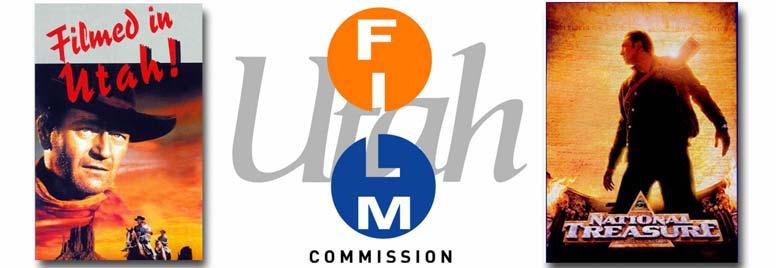
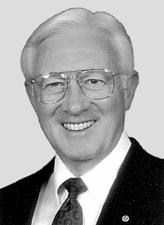
Interim Director
Richard Bradford
MISSION STATEMENT
The Division of Travel Development exists to make Utah a better place to live by increasing the economic contribution of tourism.
Fiscal Year 2003 reaffirmed tourism as a vital economic force and a revenue-generator for the state. In 2003, Utah attracted 16.9 million non-resident visitors who spent $4.21 billion. The tourism industry generated $334 million in tax revenues. Additionally, travel and tourismrelated employment totaled 99,174 jobs in areas across the state.





rbradford@utah.gov travel.utah.gov
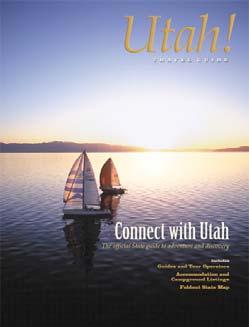
The following information depicts the advertising that was placed for the Division of Travel Development in between the beginning of 2003 to Spring and Summer of 2004:
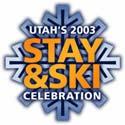
Utah’s 2003 Stay & Ski Promotion featured this distinctive logo at the resorts, and in the ads.

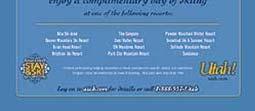
The aware of Utah from the Olympic coverage, and skiers who had already discovered Utah. It offered the premium of a free day of skiing when the visitor booked four nights lodging. The state’s resorts readily participated.
The campaign tagline, “Pull ovads in this campaign were designed to capture the attention and imagination of skiers who were er, sister. We’re going to give you a ticket” was well received, with its combination of humor and the perceived speed and enjoyment of the skier in the visual element.

A direct mail campaign targeted visitors known to have skied in Utah before, Olympic visitors, and readers of magazines such as Ski and Skiing to provide an extra “push” for known interest groups.
All of these ads carried the utah.com and 1-800-UTAH FUN response mechanisms.
The 2003 Warm Weather ads played with the Olympic theme by referencing it, but depicting warm weather activities, most in areas that received less attention during the Olympic Games. This fit the division’s strategic objective of advertising the options available across the state, year-round. In other words, positioning the Utah! brand to mean year-round recreation.
This print campaign also allowed continued opportunity for leveraged and co-op advertising such as the ad directly below, which ran in some magazines with the adjoining two-page spread including MasterCard and Falcon’s Ledge Resort, a destination property in Altamont, Utah.

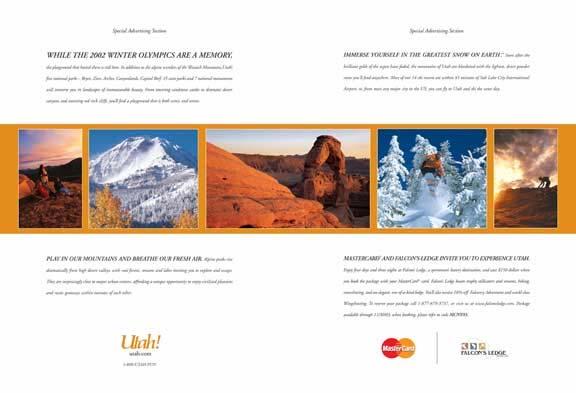
“The playground that hosted the 2002 Winter Olympics is still here – a playground that extends well beyond the mountains and snow that you saw on television. Come bask in our afterglow, and see for yourself why Utah is a vacation destination unlike any other.”
The two page addition is an excellent example of co-branding, as it included MasterCard and Falcon’s Ledge Lodge, a destination resort in Altamont, Utah.
travel.utah.gov
Tag Line: Athletes Aren’t The Only Ones To Come Here In Search Of Gold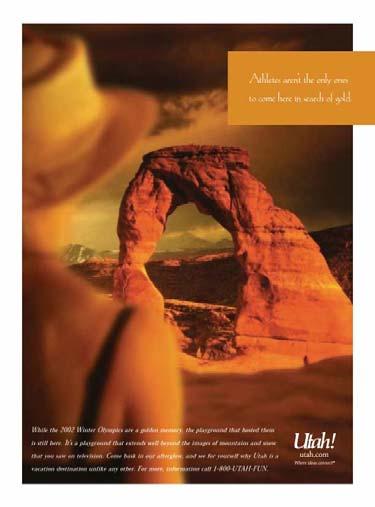
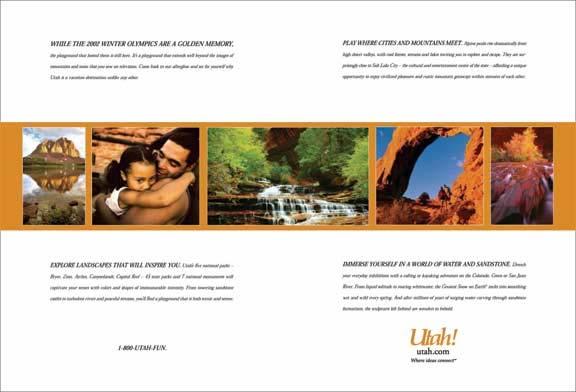
Tag Line: Athletes Aren’t The Only Ones To Come Here In Search Of Gold “While the 2002 Olympic Games are a golden memory, the playground that hosted them is still here. It’s a playground that extends well beyond the images of mountains and snow that you saw on television. Come bask in our afterglow, and see for yourself why Utah is a vacation destination unlike any other.”
The additional two-page spread added copy directly targeting southern Utah and the National Parks; “Explore Landscapes That Will Inspire You,” “Immerse Yourself In A World Of Water And Sandstone,” and also promoted Utah’s accessibility, and the state’s cities; “Play Where Cities And Mountains Meet.”
The division also continued to use Olympic imagery in these three single page print ads.

Tag Line: The Slalom Gates Are Still Here, They’re Just Called Aspen.
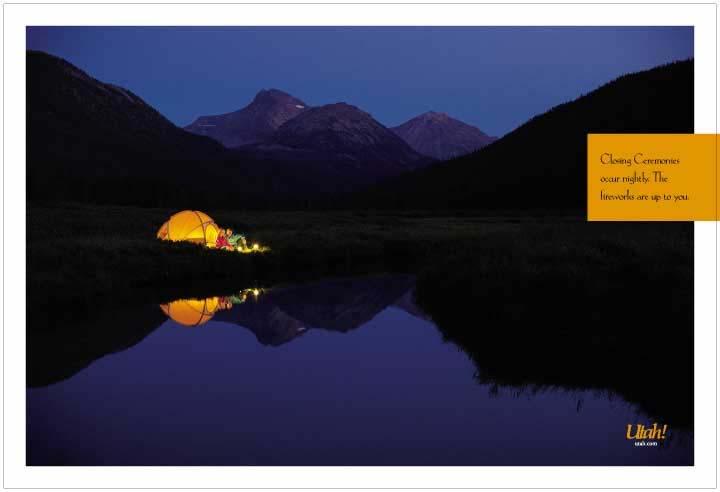
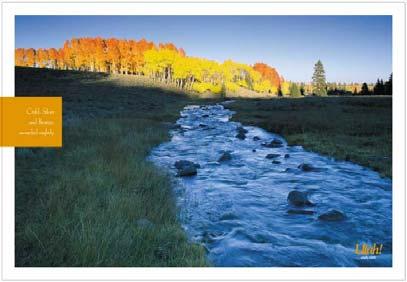
All of these ads carried the utah.com
FUN response mechanisms.
Advertising for Winter 2003 - 04 focused on our winter ski message. Cable TV and Metro Traffic report sponsorships were bought in select heavy feeder markets such as Los Angeles, San Francisco, Phoenix, Portland, Seattle/Tacoma, and Las Vegas. In addition, magazine ads were placed in various National publications including Architectural Digest, Conde Nast Traveler,Gourmet, The New Yorker, Outside Traveler, Outside, Sports Illustrated, Sunset, and Texas Monthly

Tag Line: Magically Reduce The Number Of Times You’ll Hear, “Are We There Yet?”
“Eleven of Utah’s 13 world class ski and snowboard resorts are within an hour’s drive of Salt Lake City International Airport, which means about all you’ll hear are squeals of delight as you discover Utah’s world famous snow.”
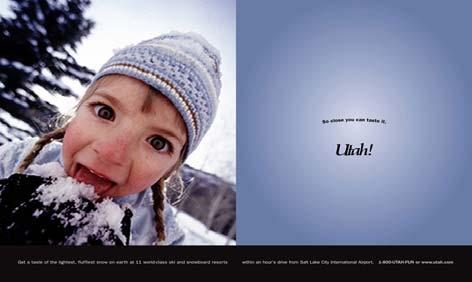
Tag Line: So Close You Can Taste It.
“Get a taste of the lightest, fluffiest snow on earth at 11 world-class ski and snowboard resorts within an hour’s drive of Salt Lake City International Airport..”
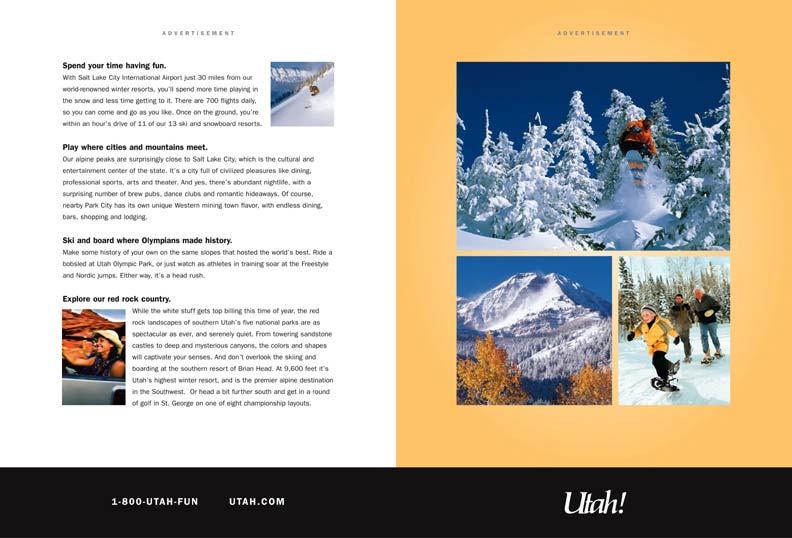
These additional two pages ran in some print placements. The copy covered the themes of “Spend your time having fun.”
“Play where cities and mountains meet.”
“Ski and board where Olympians made history.” Then it offered an invitation and information, headlined “Explore our red rock country.”
All of these ads carried the utah.com and 1-800-UTAH FUN response mechanisms.
All advertising for Spring 2004 will focus on our warm weather message and will consist of magazine ads placed in National publications including Gourmet, Sunset, Men's Journal, Outdoor Photographer and Outside.
All Advertising for Spring 2004 focused on a warm weather message that Utah promises scenery, solitude, soft adventure, BUT also fine dining and posh accommodations. This fits with our strategic goal to attract visitors who will stay longer and are willing to spend more for a vacation.
Both of the two-page-spread ads also include water in the visual element. This is to combat the perception that was articulated in focus group sessions that Utah was “dry and brown” (see research section).
The division’s campaign consisted of magazine ads placed in National publications including Gourmet, Sunset, Men's Journal, Outdoor Photographer and Outside.
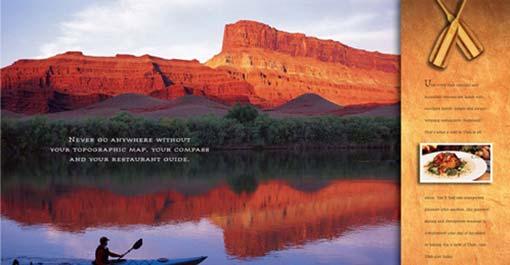
Tag Line: Never Go Anywhere Without Your Topographic Map, Your Compass And Your Restaurant Guide.
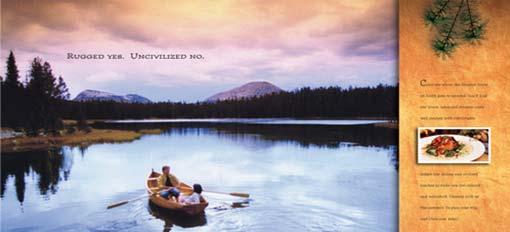
Tag Line: Rugged Yes. Uncivilized No.
All of these ads carried the utah.com and 1-800-UTAH FUN response mechanisms.
The Division of Travel Development participated in 10 major travel trade exchanges, numerous sales missions and destination development seminars in cooperation with various Visit USA Committees in maintaining contact with more than 250 tour and travel professionals in Canada, Mexico, United Kingdom, France, Germany, Switzerland, Austria, Italy and Japan.
Significant for generating additional awareness of Utah in the Japanese market was the development of a Web-based game ”Mystery Circle in the Desert” produced with Ladyweb.org of Japan focusing on the National Parks and attractions in southern Utah.
In support of Delta Air Lines, the Division participated in the Delta Gateway Showcase, an event designed to highlight Delta’s hub cities to over 70 international tour operators.
During the year the Division provided an opportunity for small business owners (SME’s) in Utah to preview the benefits of international marketing through participation in a series of International Market Workshops made possible by a Market Development Cooperator Program (MDCP) grant from the United States Department of Commerce and coordinated through the Western States Tourism Policy Council (WSTPC) of which Utah is a member.
The Division’s newly designed Trade Show Tool Kit featuring outdoor recreation in northern and southern Utah landscapes as well a Salt Lake City’s Olympic legacy was used at 12 additional different venues promoting Utah both as a convention destination and vacation destination.
Co-partners associated with the leveraged promotional efforts in FY 2004 included: DCED/International Business Development Office, Ski Utah and member organizations, Salt Lake Convention and Visitors Bureau, Salt Lake Airport Authority, Southern Utah National Parks Advertising Coalition (SUNPARKS), Moab Area Travel Council, Zion/Bryce Canyon Coalition, Great Salt Lake Bird Festival, and the Western Legends Round-up in Kanab.
In the second FY following the Olympics, the Media Relations section of the division continued to see strong media interest in Utah as a year-round travel destination.
Over the past year, more than 150 print and video travelogue inquiries reached the division, many resulted in exposure in national and international magazines and newspapers as well as sport and travel cable TV networks. Examples: Copley News Service, Washington Times, Boston Globe and St. Louis Post-Dispatch, Sunset, VIA, National Geographic Traveler & NG Adventure. Typically, dozens of Utah stories appear in national media without any prior writer contact with the division.
There was a surge in the number of guidebooks whose publishers and writers solicited guidance from the agency in updating existing titles or creating new ones (Mobil, Reader’s Digest, Lonely Planet, Insight Guides, Rand McNally). The division also fulfilled dozens of requests for video images of Utah. Highlights this year:
-Winter media tour for UK ski writers
-Two summer media tours for US & UK travel writers
-Collaboration with Utah Travel Industry Coalition on two media tours on National Scenic Byways
-Media Mission to New York and Washington, DC to solicit increased media coverage
-Scouting & shooting for new public TV program (originating at WGBH, Boston) for children called “Postcards from Buster.” Two programs featuring Utah (Salt Lake City, Dinosaurs & Winter Resorts) premieres in October 2004.
-Video travelogues on Bryce Canyon & Capitol Reef National Parks on ESPN2
The Media Relations section has an online newsroom at travel.utah.gov where media can survey story ideas with the latest news about events, destinations and attractions. The Media Relations Manager did a live broadcast every week on Salt Lake public radio station KCPW, reaching Salt Lake, Davis and Tooele Counties. The radio program, Utah Travels, focused on events.
The 2003 Utah! Scenic Calendar focused on each of the four distinct seasons of Utah’s tourism carrying a photograph of the same tree in each season, as well as the traditionally stunning monthly photos.
The 2004 Utah! Scenic Calendar featured a brief bio and statement from the photographers whose photos were selected for each month.
Every year we try to use a theme or focus for each calendar. The seasons and the photographers were the past two years. The theme for the 2005 calendar is Utah’s Scenic Byways.
The 2003 Utah! Travel Guide, 98 pages, was a continuation of the 2002 guide as we produce guides roughly every other year. Our goal is to eliminate waste and save money by using all of a current inventory before launching a new edition.
The latest Utah! Travel Guide, printed in March 2004, is called “Connect with Utah” (to “connect” with our consumer brochure of a similar name – below), 120 pages, and includes a foldout highway map, state-wide accommodations listing, guides and tour operators, complete campground guide as well as the detailed descriptions of Utah’s tourism products.
“Connect…” is a 12-page consumer brochure printed in 2003 designed for trade shows or others uses to give a brief overview of Utah tourism.
For our weekly and annual Utah! Events Calendar, we developed, in cooperation with Utah.com, an events data submission form and database that allows event planners and groups to directly enter detailed information about their event online. This data is now in an HTML-formatted email, which is distributed to media representatives throughout the state.
An extensive photo library for is maintained both for UTC use as well as non-profit organizations needing photographs to promote Utah.
We continued to have a positive, synergistic relationship with Utah.com and collaborate on http://utah.com content that benefits Utah tourism as well as meet state objectives and criteria.
Improvements to our trade/media website have been made, including a change from the cumbersome URL, http://utah.org/travel, to the more intuitive http://travel.utah.gov.
We created and launched our new Utah! Travel Resources Database, which is intended to better update and maintain information on travel and tourism-related businesses and organizations throughout the state, which members of the staff, and of the tourism industry use as a resource.
The UTC Call Center completed its fourth full year at Council Hall. With availability for three full time equivalent employees as authorized by the Legislature, we have live operators on duty Monday-Friday 8:00 a.m.–5:00 p.m. Callers to our three toll-free lines and the Utah local line regularly express appreciation for the opportunity to speak to a real person. After hours we provide recorded information and allow callers to leave a name and address for materials to be mailed. We handled 54,157 calls (24,976 live, 8,038 recorded in FY 03 and 15,798 live, 5,345 recorded YTD 2004) from mainly the United States and Canada but also from many other countries.
Our distribution office handles the packaging and mailing of Utah travel and tourism publications, primarily the Utah Travel Guide, Utah Accommodations Guide and Utah Highway map. We also distribute as requested other travel publications such as the Ski Utah Winter Vacation Planner, Outdoor Utah Guide, and other federal, city, county and region publications.
From January 2003 to July 2004, we mailed 74,812 (FY03 44,953, FY04 29,859) packets of information to those who requested materials via the mail, the Call Center and 33,392 (FY03 18,194, FY04 15,198) and Internet requests. In addition to individual mailings, we also distributed materials in bulk to Welcome Centers, AAA offices, chambers of commerce, libraries, travel agents and trade shows. Utah Travel Guides distributed in FY03 and FY 04 totaled 214,000. Our office assists the Utah Department of Transportation (UDOT) and Utah Hotel Lodging Association in the distribution of highway maps and accommodation guides used for tourism purposes. We distributed 48,720 highway maps in FY03 & 04 and 49,550 accommodation guides.
The Utah.com web site received 2,246,360 unique visits during the fiscal year, and continued to be the medium of response targeted in advertising campaigns. The site was continually monitored and changes and additions were conducted in a constant evaluation cycle.
The Internet continued to be an important method of conveying information about Utah through both www.utah.com and our government site http://travel.utah.gov, which includes general information about the division and research materials relevant to the travel and tourism industry. The government website received 173,758.
In 2004, the state legislature recognized the Utah scenic byway committee in statute. The division employee responsible for this program was named as chairman, and is the primary liaison between the federal government and the local Byway Committees.
The state of Utah received the following Scenic Byway Grants, each of which went directly to the associated community:
Cooperative Committees and Special Projects
Community Cooperative Historic & Cultural Committee (CCHCC) put a Web site together linking to www.utah.com and other DCED web sites. We also have positions on the committee for Utah Cultural Alliance, Utah Interagency Task Force, and CANAMEX Committee, and attend Utah Travel Region and Utah Tourism Industry Coalition meetings.
The division contracted with Utah Tourism Industry Coalition (UTIC) for local level hospitality training. Division oversight of the program continues.
During this period, three division grant programs (Travel Region Matching Funds, Tourism Destination Development, and Community Partnerships) were suspended due to budget cuts.
The goal of all three programs was to initiate economic development in communities, and most awards served as seed money. These grant programs were some of the most successful blend of local and state interests.
The Division contracts for the tourism information portion of Utah’s five gateway welcome centers. Each welcome center received $52,500 for administrative and operations. The partnership of information services from the division and maintenance by UDOT is working well.
This program places a division employee in east-central Utah to facilitate infrastructure development and tourism promotion opportunities in the rural areas of the eastern part of the state.
Participated in BLM RAC San Rafael Subgroup: read and prepared response to BLM RMP. Attended public meetings and subgroup monthly meetings.
Supported preservation activities on San Rafael Swinging Bridge – evaluating repairs, preparing bid descriptions and announcements for bids, overseeing research on history of the bridge and preparing contract reimbursement forms to Utah State History.
Oversaw production of “Castle Valley” book and prepared final report to Eccles Foundation that provided funds for this and other projects.
Participated in the on-going development of a management plan for Range Creek.
Conducted familiarization tours for media and tour operators.
Supported Emery County Community Foundation efforts to restore the old Emery church for a visitor information center and pioneer and farming museum. They have an Eccles challenge grant that has a final date for fund raising of December 2005.
Supported Living Utah’s efforts to develop ranch recreation, natural beef, and folk artists in the region.
Continually looked for opportunities to obtain grants to support projects in the rural areas.
Served on the following organizations and committees:
-Ferron Special Events Center Committee
-Ferron Historical Preservation Commission
-Emery County Community Foundation
-Emery County Historical Preservation Commission
-Living Utah! - Assisted in development of this organization to aid in the growth of ranch recreation, arts and crafts production and natural beef products. Received $ 25,000 from the Eccles Foundation for development of ranch recreation with regional ranchers, and applied to the USDA for a grant to develop natural beef.
-Range Creek Management Plan Committee
-Canyon Country Partnership: a group of county, state, and federal land and resource managers which meets bi-monthly to keep updated on management problems and activities in the four county area of Carbon, Emery, Grand, and San Juan counties.
In FY 2003, an advertising effectiveness study was commissioned to determine the return on investment from the Division of Travel Development’s advertising. This was the first time that a study of this nature had been conducted by the state. Conducted by NFO Plog Research (now known as TNS), study results showed a significant return on investment for public funds:
-Ad Expenditures: $3.5 million
-321,609 leisure travel households saw the ad, said the ad influenced them to visit Utah, and visited the state
-Members of those out of state households spent $378.1 million in Utah
-The result was $30.2 million in tax revenues (conservative estimate based on 8% of total spending going to state and local taxes)
-State and local tax revenue per ad: $8.64 for every $1 spent on advertisements
The research also showed that compared to other western states, Utah’s image is perceived as deficient in regard to:
-Beauty/scenic
-Great Getaway
-Lots to do
-Dining and entertainment
However, once visitors do come to Utah, they like it. The study showed that over 80% of visitors were satisfied with their visit.
Additionally, a qualitative study involving focus groups in Dallas, Phoenix, and Los Angeles was conducted by Riester-Robb, the division’s advertising agency. Focus group participants perceived Utah as dry and brown with a low level of excitement. However, once they were reminded about watching the 2002 Olympic Winter Games, they noted how beautiful and fun the state looked. Their perceptions changed dramatically with some aided awareness of Utah hosting of the Olympics.
Study conclusions upheld the feeling that even with the success of the 2002 Olympics, Utah needs to continue to advertise to remind people of what the state has to offer.
Noting the return on investment of $8.64 in tax revenue for each $1 spent on advertising, research indicates that promoting the Utah! brand is a logical investment for the state, which would generate a significant amount of money for the State’s General Fund, providing tax revenue for education, roads, and other state needs.
The annual edition of the Tourism, Travel & Recreation Chapter in the 2004 Economic Report to the Governor illustrated the industry’s 2003 performance and presents the 2004 outlook.
The annual edition of the State & County Economic and Travel Indicator Profiles serves as Utah’s most comprehensive statistical report on the state’s tourism industry. The report includes state and county data on traveler spending, employment, tax revenues, land ownership, and regional visitation statistics.
The 2003-04 Market Profile Analysis complements the Division’s marketing plan, providing a situation analysis, including a discussion of Utah’s tourism industry, domestic and international visitors, consumer trends, and main competitors.
The Utah Travel Barometer, a research and planning newsletter is a quarterly publication featuring timely research and industry trends, and information on topics such as creating annual plans, team building, and negotiation. Each issue of the Barometer was distributed to over 1,500 tourismrelated constituents and businesses and government entities. In addition, the publication was made available online at travel.utah.gov.
The division’s strategic plan remained in its annual cycle of evaluation. This evaluation process contributed to the identification of one strategic objective and its associated actions and FTE, which were eliminated due to budget cuts.
The Planning Coordinator created a packet for all employees to use in order to examine each aspect of the strategic plan, and link their tasks and functions to the objectives and actions in the plan. The process included an evaluation of program goals and personal actions and tasks.
Following this exercise, in May 2003, a 76-page publication covering the division’s marketing, shortterm tactics and current media plans was made available in hard copy and online.
The division’s “Tree Chart,” which is used to provide an overview of our strategic plan, our roles, and our mission, was updated with input from management and staff.
The Planning Coordinator provided staff support to the Tourism Marketing Performance Fund Committee (aka: MAC or Marketing Advisory Committee). During the time frame covered in this report, the 12-member committee comprised of industry representatives appointed by the governor funded, matched funding, or contributed to several projects:
-Ski Utah’s Stay and Ski Advertising Program (FY03)
-Supplemental funding for advertising of the Utah! brand (FY03)
-Supplemental funding for the Trade Development program’s, “Utah! brand Tool Kit” –a display, banners, and publications to be used at trade shows (FY03)
-Utah Tourism Industry Coalition (UTIC) - completing the interim preparations for a statewide hospitality-training program, and beginning to conduct trainings in rural areas (FY04)
-SUNPARKS – a cooperative marketing entity involving San Juan, Grand, Wayne, Washington, and Garfield Counties – that markets Utah’s national parks was awarded funds to help develop and print a brochure, and place print advertising in nationallydistributed magazines (FY04)
-Utah.com received matching funds to conduct a “pay per click” campaign that placed the Web site at the top of the list on prominent Internet search engines when key phrases related to Utah recreation were entered as a search (FY04)
-Advertising funds were granted to provide out of state publicity in targeted markets for the Western Legends Round-Up in Kanab (FY04)
-Supplemental funds for Ski Utah Advertising (FY04)
-Money to help pay for out of state advertising in niche market publications to promote the Great Salt Lake Bird Festival (FY04)
The Tourism Marketing Performance Fund Committee was not funded for FY05, so the committee is currently in hiatus.
The mission of the Division of Housing and Community Development is to host the state's efforts to help local governments, organizations and individuals in creating and maintaining public infrastructure, facilities, services and housing and economic development to enhance the quality of life for all Utahns.
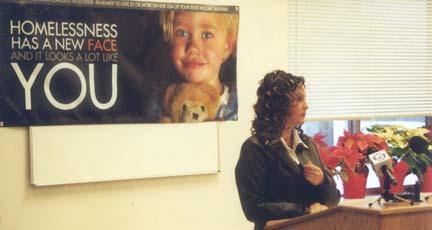
The State Community Services Office provides guidance, oversight and funding to facilitate communities in assisting people to become more selfsufficient socially, physically, and economically by reducing poverty and improving the quality of life for low income Utahns.
The State Community Services Office is responsible for the administration of the following federal and state programs: Community Services Block Grant, Community Food and Nutrition Program, Emergency Shelter Grant, Critical Needs Housing, Pamela Atkinson Homeless Trust Fund, and the Emergency Food Network .
The SCSO disbursed the following funds during fiscal year 2004:
Community Services Block Grant
Pamela Atkinson Trust Fund
Critical Needs Housing
Emergency Shelter Grant
Emergency Food Network
Community Food & Nutrition
$3.3 million
$1.5 million
$ 564,100
$ 541,000
$ 170,400
$ 26,645
The following funds were used for temporary shelter, transitional housing, homeless prevention, home repairs, and meals:
• Dixie Care and Share, St. George, provided 13,688 temporary shelter nights for 851 people, nine of which were placed in permanent housing.
• Iron County Care and Share provided 3,390 temporary shelter nights to 400 homeless men, women and children. The agency also provided 3,987 hot meals, 2,090 sack lunches, and disbursed 4,902 emergency food boxes. Eight families moved into permanent housing.
• Food and Care Coalition, Provo, served 128,000 meals and distributed more than 130,000 pounds of food to the homeless and critically low-income persons.
• Center for Women and Children in Crisis provided safe shelter to 187 women and 247 children who were victims of domestic violence. Seventy one families were successfully placed into transitional or permanent housing.
• Volunteers of America, Salt Lake City, provided outreach services to 700 people, including basic needs such as food, blankets, sleeping bags, clothing and referrals to human-service agencies. VOA also served 290 youths at its drop-in center for homeless youths ages 16 to 21.
• Homeless Veterans Fellowship, Ogden, provided transitional housing to 60 veterans. Several received substance-abuse treatment.
• Bear River Association of Governments, Logan, provided emergency repairs for 20 households with malfunctioning or unsafe furnaces and more than 48,000 people with emergency food boxes.
dced.utah.gov/scso
Emergency Food Network funds are disbursed to emergency food pantries throughout the state. EFN funds assisted food pantries in providing an average of 20,000 families a month with emergency food boxes.
Balance of State Continuum of Care represents the rural areas that provide the development of supportive housing projects, transitional housing, case management, and other services to help individuals to become self sufficient. The BSCC was successful in receiving $1.6 million from the U.S. Department of Housing and Urban Development. Other continuums that also received funding include those serving Utah, Summit, and Wasatch counties ($844,730) and Salt Lake County ($1.7 million).
Community Services Block Grant: The Utah Community Services Block Grant network consists of five public and four privately operated community action agencies. Discretionary funding is distributed to the state association of CSBG providers and Utah Issues Information Program, a private, nonprofit organization whose mission is to improve the quality of life for poverty-stricken Utahns. The CSBG network coordinates statewide activities designed to reduce poverty and encourages private-sector entities to participate in efforts to alleviate poverty in local communities. Some agencies emphasize case management and family development programs. Other focus on emergency services, housing, and nutrition.
Homeless Information System: The state was successful in receiving a grant from the U.S. Department of Housing and Urban Development to implement a statewide management information system for the purpose of collecting unduplicated counts of homeless people and analyzing patterns of uses of services.
The HEAT program provides home winter utility assistance to low-income households. A federal block grant from the Low Income Home Energy Assistance Program (LIHEAP) funds HEAT. The program is administered in partnership with Associations of Governments, Community Action Agencies, and other nonprofit agencies.
• Utah received $14 million in federal LIHEAP funds.
• HEAT processed 35,362 applications for assistance, an increase from 33,975 last year.
• The program assisted 32,679 households with heating payment help with an average utility benefit payment of $295, up from $250 the previous year.
• The households served include nearly 95,000 people, or about 4.7 percent of the state’s population.
• The homes of 696 low-income households were weatherized compared to 537 the year before.
• 427 households received crisis/furnace repair assistance.
• 2,237 households received emergency utility assistance.
• Household profiles were as follows:
1. All households served were at or below 125 percent of poverty level
2. 65% were at or below 75 percent of poverty and/or had annual incomes of $8,000 or less
3. 60% were on fixed incomes
4. 36%, or 11,788 households, were the working poor
5. 40%, or 13,150 households, had a disabled person
6. 28%, or 8.999 households, were receiving Social Security
7. 23%, or 7.453, were elderly households
8. 45%, or 14,705, were families with preschool-age children in the home
Below is a sample of the kind of remarks the HEAT Program receives throughout the year from the people it serves:
“Thank you for allowing me to participate in the HEAT program this year. It will be a great help to me with my utility payments. May God bless you and know that my heart is full with this assistance. Words cannot express how grateful I am.”
—An elderly constituent
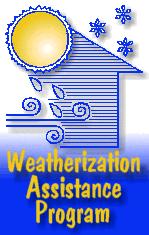
The Utah Weatherization Assistance Program enables low-income households, particularly those with elderly and handicapped residents and families with preschool-age children, to participate in energy-conservation programs that will lessen the impact of utility costs on household budgets and encourage self-sufficiency.
The Utah Division of Housing and Community Development administers the U.S. Department of Energy’s Weatherization Assistance Program through eight government and nonprofit agencies around the state. State funding for weatherization was leveraged with six additional private and federal grants at a ratio of approximately $340 from those sources to every one dollar from the state. Such a match helps minimize state investments and allows increased services and program flexibility. During fiscal year 2004, weatherization services were provided as follows:
Individuals, families, the elderly (age 60 and older), and the disabled who are no more than 125 percent of the current federal poverty income level are eligible for help from the Weatherization Assistance Program. However, priority is given to the elderly and disabled, households with high-energy consumption, emergency situations, and homes with preschool-age children. Participating households nationally are averaging a savings of nearly 33 percent on energy consumption or approximately $285 a year. Both owner-occupied and rental housing are eligible for weatherization. However, the goal of the weatherization program is to help low-income tenants reduce their utility costs without excessive enrichment to the property owner. In most cases, rental property owners are required to provide a 50 percent funding match.
In carrying out weatherization projects, first priority is given to stopping infiltration of warm or cold air into a dwelling. The second priority is installing a balanced combination of energysaving home improvements. These include furnace tune-ups and repairs; insulation of attics, floors, walls, foundations, and exposed heating ducts; installation of replacement windows and efficient lighting and refrigerator replacement.
Only measures with a savings-to-investment ratio of greater than one can be installed (based on a computerized energy audit of each home). Funding from utility companies has increased the scope of the program to include electrical baseload reduction activities and increased natural gas appliance safety measures.
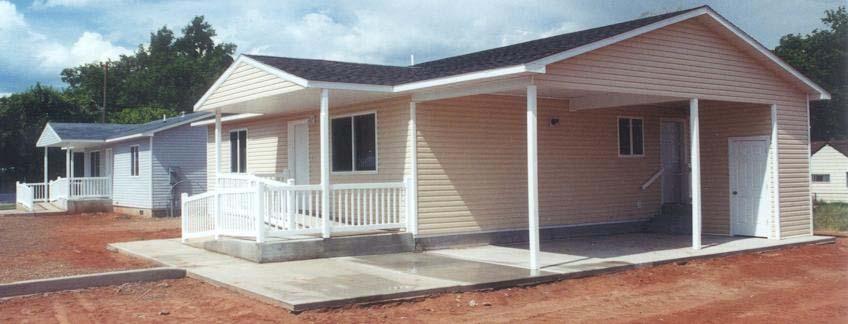
The Olene Walker Housing Loan Fund is comprised of state and federal funds that assist in the construction, rehabilitation, and purchase of multi-family and single-family housing throughout Utah. The fund was named in honor of Governor Olene Walker in recognition of her lifetime advocacy of affordable housing opportunities for low to moderateincome individuals and families.
The Olene Walker Housing Loan Fund awarded $5.98 million in loans and grants during fiscal year 2004 for the purchase and/or renovation of at least 706 units of multi-family housing for low-to-moderate income residents in Utah.
Many of these units of housing are preservation projects, formerly Section 8 housing. Such units of affordable housing were created nearly three decades ago under the U.S. Department of Housing and Urban Development’s (HUD) Section 8 Affordable Housing Program. They are now at the end of their terms of contract with HUD. The owners of these projects now have the option to leave the affordable housing program and rent the units at prevailing market rates. When owners choose to sell and allow the units to be updated and rented at market rates, many units of existing affordable housing can be lost and existing tenants are often displaced. The Olene Walker Housing Loan Fund has pro-actively pursued solutions to this problem. A cohesive policy to protect such units has been implemented.
The opportunity to own a home can seem to be an unattainable goal of many low to moderateincome persons throughout Utah. Because of an expanding program developed through the OWHLF, many more people will achieve the goal of homeownership. The OWHLF has provided greater funding to local affordable housing agencies, working through regional Associations of Governments, to provide down payment and closing-cost assistance funds to low and moderate-income persons. The loan fund assisted 78 families to purchase their own homes.
The funds provided to the local agencies can help families find a quality, affordable mortgage on a home and local agencies can also help potential homebuyers avoid predatory lending practices. When OWHLF funds are involved in the transaction, the family is required to attend classes which outline the responsibilities of homeownership, including mortgage obligations, budgets, and maintenance, to assure successful home ownership.
The HOPWA Program is coordinated through the State HIV/AIDS Housing Steering Committee (SHAHSC). This committee is a statewide body of housing advocates, providers, and consumers who have adopted the following mission statement: To facilitate the creation and maintenance of affordable quality housing opportunities for people living with HIV/AIDs.
The committee has been adopted by DCED as a subcommittee of the Olene Walker Housing Trust Fund Board. HOPWA also partners with the Ryan White Title II Program, administered by the Utah Department of Health.
A U. S. Department of Housing and Urban Development HOPWA grant of $65,000 helps provide housing assistance for people with HIV/AIDs (PLWAs) living in rural Utah. The grant funds longterm rental assistance, emergency and short-term rental/mortgage assistance to prevent homelessness, and a statewide housing coordinator to identify and develop housing assistance resources.
• Salt Lake Community Action Program (SLCAP): Three rural PLWA households were provided short-term rental assistance and/or emergency assistance ($2,855). Housing information, referrals, and placement services were also provided.
• Housing Authority of the County of Salt Lake (HACSL): Assisted eight households with long-term rental assistance ($19,480). These households are immediately placed on their Section 8 waiting list.
• Catholic Community Services-Ogden Area (CCS): Provided short-term rental and emergency assistance for ten PLWA households located in the state’s rural areas north of Salt Lake and Weber counties ($7,757). CCS also provides housing information, referrals, and placement services.
• Kenyon Consulting, Inc.: A part-time housing resource person helps to coordinate and develop housing assistance resources. The annual contract amount is $7,500. He is finishing up a housing project for PLWAs that should net at least seven permanent units later this year.
• St. George Housing Authority: Provided assistance to two PWA households with long term rental assistance and three households with short term/emergency assistance ($8,248).
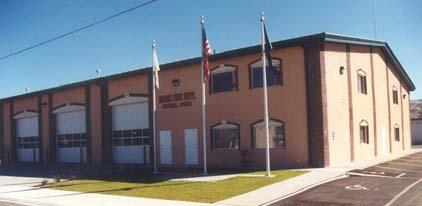
The Permanent Community Impact Fund Board (CIB) is a program of the state of Utah, authorized by statute, which provides grants and/or loans to subdivisions of the state which are, or may be, socially or economically impacted, directly or indirectly, by mineral resource development on federal lands. The CIB’s source of funding is a portion of federal mineral lease royalties returned to the state by the federal government.
The CIB is directed by an eleven-member board composed of the executive director of the Department of Community and Economic Development or designee; the chair of the state Board of Water Resources or designee; the chair of the state Water Quality Board or designee; the chair of the state Board of Education or designee; the chair of the state Board of Regents or designee; a locally elected official from Carbon, Emery, Grand or San Juan counties; a locally elected official from Daggett, Duchesne, or Uintah counties; a locally elected official from Juab, Millard, Sanpete, Sevier, Piute, or Wayne counties; a locally elected official from Beaver, Garfield, Iron, Kane, or Washington counties. Administrative and operational support is provided by the Utah Division of Housing and Community Development.
Eligible applicants are limited to state agencies and "subdivisions” of the state including: counties, cities, towns, county service areas, special service districts, special improvement districts, water conservancy districts, water or sewer improvement districts, housing authorities, building authorities, school districts, and public postsecondary institutions.
• Utah statute authorizes the CIB to fund the following activities: planning, construction and maintenance of public facilities, and provision of public services.
• The CIB's administrative rules further define "public facilities and services" to mean public infrastructure traditionally provided by governmental entities.
• Eligibility is limited to projects owned by an eligible applicant.
• Funding for grants will be limited to a total $6 million per year or $2 million per trimester funding cycle.
• Total participation in any given project will be limited to a maximum of $2.5 million regardless of grant/loan combination.
• Planning and study funding requests require a 50 percent cash contribution from the applicant.
• Solid waste management projects will be funded only with interest bearing loans.
Statutory Authority
The Rural Development Fund (RDF) is a state program authorized by statute. The RDF provides grants to local governmental entities in south-central Utah impacted by the transfer of lands by the federal government to the control of the Utah School and Institutional Trust Lands Administration in 1998. The RDF funding comes from a portion of mineral lease royalties collected on the exchanged lands.
Board Membership
The RDF is controlled by a five-member board composed of a governor's designee and a mayor or county commissioner from each of the four participating counties of Kane, Garfield, Piute, and Wayne. Administrative and operational support is provided by the Utah Division of Housing Community Development.
Eligible Applicants
Eligible applicants are limited to county and municipal governments or special service districts in Kane, Garfield, Piute, and Wayne counties.
Eligible Projects
The RDF considers applications for capital, or so-called brick and mortar, projects, which include public facilities, services or infrastructure traditionally provided by local government entities under Utah statute. Eligibility is limited to projects owned by an eligible applicant.
Funding Guidelines
Applicants are strongly encouraged to leverage RDF with other matching funds. All applicants must demonstrate that the facilities or services provided will be available and open to the general public and that the proposed funding assistance is not merely a device to pass along lowinterest government financing to the private sector.
Fiscal Year 2004 Approved Projects
The Navajo Revitalization Fund (NRF) is a state program authorized by statute. The NRF maximizes long-term benefits of state severance taxes paid on oil and natural gas production by providing grants and/or loans to agencies of county or tribal government in San Juan County which are impacted by the development of oil and gas interests in Utah held in trust for the Navajo Nation and its members.
Board Membership
The NRF is directed by a five-member board composed of a governor's designee, the two members of the San Juan County Commission whose districts include portions of the Navajo Reservation, the chair of the Navajo Utah Commission or his designee, and the chair of the Utah Dineh Committee or his designee. Administrative and operational support is provided by the Utah Division of Housing and Community Development.
Eligible Applicants
The NRF may authorize grants and/or loans to the Navajo Nation and its departments or divisions; any Utah Navajo Chapter, as defined in Section 63-88-101; the Navajo Utah Commission; Utah state agencies or subdivisions; the Navajo Trust Fund; or nonprofit corporation that are or may be socially or economically impacted, directly or indirectly, by mineral resource development.
Priority Projects
Capital projects and infrastructure, including electricity, water, and other one-time needed projects; housing projects including the purchase or construction of new housing or significant remodeling of existing housing; matching educational endowments that promote economic development, Navajo culture, history, language, and support postsecondary educational opportunities for Navajo students.
Funding Guidelines
All applications must contain matching funds.
The Uintah Basin Revitalization Fund (UBRF) is a state program authorized statute. The UBRF provides grants and/or loans to agencies of county or tribal government in the Uintah Basin, which are impacted by the development of oil and gas interests held in trust for the Ute Indian Tribe and its members on the Uintah and Ouray reservations.
Board Membership
The UBRF is directed by a five-member Board comprised of a governor's designee, a Duchesne County commissioner, a Uintah County commissioner and two representatives of the Ute Indian Tribe's business committee. Administrative and operational support is provided by the Utah Division of Housing and Community Development.
Eligible Applicants
The UBRF Board may authorize grants and/or loans to agencies of Duchesne or Uintah counties or the Ute Tribe that are, or may be, socially or economically impacted, directly or indirectly, by development of oil and gas interests held in trust for the Ute Indian Tribe. Formal applications for UBRF grants are submitted by the respective county commissions or the tribal business committee. All decisions of the UBRF Board require four affirmative votes.
Eligible Projects
• Capital projects, including subsidized and low-income housing, and other one-time needed projects and programs.
• Projects and programs associated with the geographic area where the oil and gas are produced.
The Rural Electronic Commerce and Communications System Fund (REC) is a state program authorized by statute. The REC provides grants for programs or projects that preserve or promote communications systems within the rural areas of the state. REC's funding comes from a portion of mineral lease royalties collected on lands transferred by the federal government in 1998 to the control of the Utah School and Institutional Trust Lands Administration. The REC may also issue revenue bonds to provide financing for eligible projects.
Board Membership
The REC is controlled by a nine-member board composed of a governor’s designee, a county commissioners from four rural counties, a mayor from each of four rural counties. Administrative and operational support is provided by the Utah Division of Housing and Community Development.
Eligible Applicants
Entities concerned with preserving or promoting communications systems within the rural areas of the state.
Eligible Projects
Programs or projects which preserve or promote communications systems within the rural areas of the state.
The $3.2 million upgrades to the statewide television translator system is financed with a revenue bond issued by a consortium headed by the Utah Association of Counties. On June 2, 2000, the REC committed to provide an annual grant equal to the annual debt repayment necessary to repay this debt over the eight-year term of the bond.
The payment requirements on this revenue bond are as follows:
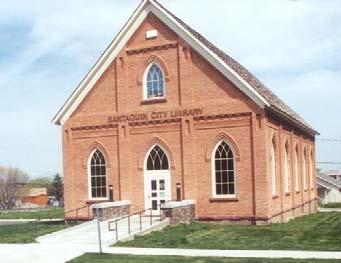
In 2003-2004, a record $7.5 million was distributed to rural communities (population less then 50,000) in Utah of fewer than 50,000 people through the Utah CDBG program. The program continues to benefit low-income citizens throughout the state.
In Utah, the program is unique because projects are prioritized for funding at the local level by locally elected officials with input from local citizens. Grants were distributed to local Associations of Governments (AOG’s) as follows, with the number of funded projects:
Fiscal year 2004 saw a decrease in the number of projects and funds available due in part to St. George and Logan reaching the population totals to become eligible to receive CDBG funds directly from t he U.S. Department of Housing and Urban Development. Water systems and community facilities continue to be the top priority for CDBG funds in many communities. The chart above demonstrates that CDBG funds are meeting the diverse needs of communities. Through continued local planning and participation, CDBG funds will continue to serve citizens according to local needs.
The Office of Museum Services will promote Utah museums and the essential role they play in our state as sources of community pride, centers of public education, and institutions that encourage economic development and tourism.
The Office of Museum Services assists Utah museums in improving their ability to:
· Care for and manage collections
· Develop quality educational resources
· Provide access to collections for research
· Identify and successfully compete for financial resources
· OMS and the Utah Museums Association sponsored Utah Museum Day on January 27, 2004 at the Capitol to celebrate the contributions of museums. Museums displayed a portion of their collections to emphasize the educational value museums provides to the state.
· A new mobile van was purchased and outfitted with preservation supplies and equipment to help museums improve and better preserve their collections. The van was taken to Sanpete and Millard counties to provide museums with intensive hands-on technical assistance.
• A major responsibility of the Office Museum Services is to help museums in Utah realize their public potential. To meet this objective, State Performance Goals have been established to raise the professional level of Utah’s museums. Five museums were certified by Museum Services during fiscal year 2004 for achieving State Performance Goals, bringing the total to 39 museums that have met those standards.
• Three workshops were presented on "Designing Short/Long Range Collection Management Goals" and "Conservation Concerns During Exhibit Design." The sessions provided training for 145 people affiliated with museums around the state.
• An additional 23 museums were surveyed for specific individual collection management needs.
In addition to the programs and services listed above, $132,727 in grants were provided to 51 museums in 20 counties:
Beaver County
Beaver DUP Museum, $500
Box Elder County
Brigham City Art Gallery & Museum, $3,000
Cache County
Allen & Alice Stokes Nature Center, $1,227
Paradise DUP Museum, $500
Wellsville DUP Museum, $500
Carbon County
CEU Prehistoric Museum, $6,000
Davis County
Bountiful/Davis Art Museum, $6,000
Centerville DUP Museum, $500
Woods Cross DUP Museum, $500
Emery County
Castle Dale Historic Pioneer Museum, $3,000
John Wesley Powell Museum, $3,000
Garfield County
Anasazi State Park Museum, $4,043
Escalante DUP Museum, $500
Hatch DUP Museum, $500
Iron County
Braithwaite Fine Arts Gallery, SUU, $4,100
Iron Mission State Park Museum, $4,000
Kane County
Kanab Heritage House, $3,000
Kane County DUP Museum, $500
Millard County
Delta DUP Museum, $500
Millard County, DUP Museum, $500
Salt Lake County
Alf Engen Ski Museum, $6,000 Art Access, $2,836
Chase Home/Utah Folk Art, $6,000
Commemorative Air Force-Utah Wing, $6,000
Fort Douglas Military Museum, $6,000
Salt Lake Art Center, $6,000
Sandy Historical Museum, $500
State Fine Art Collection, $3,000
Tracy Aviary, $5,904
Utah Museum of Natural History, $6,000
Utah’s Hogle Zoo, $3,000
Wheeler Historical Farm, $3,000
San Juan County
Blanding City Museum, $2,000
Edge of the Cedars State Park Museum, $6,000
Sanpete County
Manti DUP Museum, $500
Mt. Pleasant Pioneer Historic Museum, $500
Spring City DUP Museum, $3,000
Sevier County
Fremont Indian State Park Museum, $2,000
Redmond DUP Museum, $500
Richfield DUP Museum, $3,000
Summit County
Echo Historical Church Museum $500
Park City Historical Museum, $6,000
Tooele County
Benson Grist Mill Museum, $2,113
Donner-Reed Memorial Museum, $3,000
Tooele DUP Museum, $500
Tooele Valley Railroad Museum, $500
Utah County
BYU Museum of Peoples & Culture, $6,000
Camp Floyd State Park & Museum, $3,000
Crandall Historical Printing Museum, $3,500
Emerson-Smith Museum, $3,000
The John Hutchings Museum, $2,998
Orem Heritage Museum at SCERA, $575
Peteetneet Academy Museum, $3,000
Salem DUP Museum, $500
Spanish Fork DUP Museum, $500
Wasatch County
Rock Cliff Nature Center at Jordanelle, $6,000
Wayne County
Bicknell DUP Museum, $500
Weber County
Eccles Community Art Center, $2,505
Fort Buenaventura State Park Museum, $3,000
Treehouse Children’s Museum, $6,000
WSU Mary Elizabeth Dee Shaw Gallery, $5,000
The Utah Commission on Volunteers improves communities through service and volunteering in the state. The commission has four basic responsibilities: to administer and coordinate Corporation for National and Community Service programs such as AmeriCorps, administer Citizen Corps in Utah, oversee America’s Promise efforts in the state, and provide technical support to Utah’s Volunteer Centers.
Part of the national Call to Service by President George W. Bush and engages over 50,000 Americans each year in intensive, results-driven service. Upon completing the terms of service, each AmeriCorps member receives an education award to help finance their college education or to repay student loans. To date, more than 1,200 Utahns have qualified for education awards totaling more than $5 million. During the last program year, eight local programs received a total of $884,200 in federal AmeriCorps funding which engaged 167 individuals in National Service positions. Each of these AmeriCorps members mobilized thousands of additional community volunteers throughout the state.
In February 2004, the Utah State Citizen Corps Council was officially made a sub committee of the Utah Commission on Volunteers, reporting to the Lt. Governor. Additionally, Governor Walker appointed Scott G. Snow, executive director of the Commission on Volunteers, to serve as State Citizen Corps Point of Contact. In partnership with the Utah Department of Public Safety, Division of Emergency Services and Homeland Security, this program helps involve every American in making our communities safer, stronger, and better prepared. In June 2004, 33 Utah communities received grants of $340,800 in federal funds to develop and sustain local Citizen Corps Councils in 25 of 29 counties in the state.
Presented each year to 52 outstanding volunteers from throughout the state in ceremonies held quarterly at the Capitol. As of June 2004, 182 Utah weekly awards have been given and 60 of those recipients have also received the national Daily Points of Light Award from the president and the Points of Light Foundation.
An extension of the national America’s Promise program founded by Colin Powell. Utah’s Promise strives to provide children in the state with the tools they need to succeed in life. In the past seven years since its inception, over 75 communities, sites, schools and organizations of promise have committed to fulfill Utah’s Promise to youth in our state by providing them with a healthy start in life, a caring adult, a safe place, marketable skills, and opportunities to serve.
Held October 16-18, 2003 at Utah State University to help youth learn effective leadership and service skills. Six teams of youths from across the state participated and planned a regional youth summit in their own communities where they shared the knowledge and skills they gained at the youth summit.
Held April 6-8, 2004. Approximately 500 representatives of volunteer and service organizations from across the state attended the conference to discuss current issues in service and volunteerism, as well as to network with colleagues from across the state.
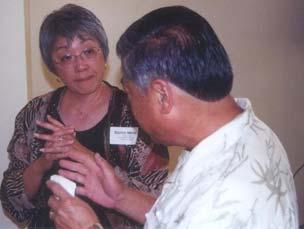
The Utah Office of Asian Affairs, in conjunction with the Asian Advisory Council, works closely with state agencies to assure their responsiveness to the needs of Asian Americans in Utah. The office and council share the objectives of improving the quality of life for Utah’s Asian communities in such vital areas as economic opportunities, community development, health, education, civil rights and criminal justice.
Utah’s growing Asian population of nearly 50,000 people includes more than 18 different Asian ethnicities, each having its own language, culture, and traditions. The challenge for the Office of Asian Affairs is to assure that each community has a voice and that support and solutions are equitable and effective. Another objective is to measure the social capital of these communities and leverage these resources for the continued development of the broader community of Utah.
• The Office of Asian Affairs collaborated with the Asian Advisory Council to organize and conduct the first Asian Leaders Summit for Utah to bring together representatives from each of the Asian communities to share concerns, set priorities and establish the following committee: education, health, legal, economic development, and leadership.
• Obtained for review copies of all documents pertaining to the site reviews and compliance of nine school districts in violation of federal civil rights legislation.
• The Office of Asian Affairs was represented on the governor’s Commission on Literacy.
• Obtained ethnic student data from eight school districts regarding enrollment, graduation/ drop-out rates, and test scores.
• Participated with the kindergarten through 8th grade Utah State Office of Education committee on literacy and match basic competencies.
• Actively participated in the effort to re-establish funding for adult education programs in public education.
• Honored four individuals for their contributions to the academic success of ethnic students in particular and development of cultural sensitivity by students at large.
• The advisory council and office have secured approval to link an Asian education Web page to the Utah System of Higher Education’s Utah mentor Web site.
• The Office of Asian Affairs, Asian Advisory Council, and U.S. Department of Justice cosponsored a Muslim, Arab, and Sikh cultural sensitivity and protocol seminar for Utah’s law-enforcement agencies and airport security personnel.
• The legal committee has organized six public seminars entitled “Know Your Legal Rights.”
• The advisory council and office presented Asian citizen’s concerns to the Salt Lake City Police Department civilian review board.
• Co-sponsored the Race and Disability Summit focusing on service providers and their effectiveness in reaching out to ethnic communities.
• Actively supported the successful legislative effort to fund the Utah Multicultural Health Center.
• Co-sponsored the Conference on Eliminating Utah’s Health Disparities Among Ethnic Minorities.
• The economic development committee is developing an Asian business directory and exploring the creation of an Asian chamber of commerce.
• Leadership training workshops have been held and more are scheduled.
• Disseminated information via the website regarding FAQ’s, cultural events, resource listings, employment links and population data.
• Co-sponsored/made presentations for and participated in multiple events for 14 different Asian-American communities; supported advisory council members in their efforts to unify ethnic community groups.
• Facilitated the Asian Advisory Council’s event planning.
• Raised public awareness of the history and contributions of Asian Americans in Utah through speaking engagements.
• The office continues to mark referrals to local, state, and federal agencies and community organizations for issues involving immigration, discrimination, education, youth (gangs), interpreters, and employment. Requests for speakers, entertainment, and cultural presentations were directed to the requested ethnic community groups.
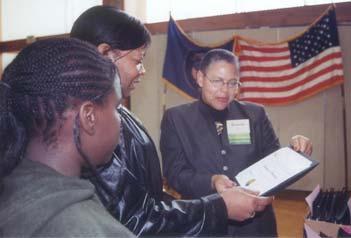
The Office of Black Affairs and Black Advisory Council work with the governor, legislators, and state agencies to enhance awareness of the black community’s needs, improve government’s responsiveness to those needs, and create a better quality of life for Utah’s black citizens.
Utah’s black population increased an estimated 45 percent from 1990 – 2000. It comprises only 0.9 percent of the state’s total population. Racial and ethnic disparities regarding educational achievement, health-care access, health risk, economic opportunities, and the minority overrepresentation in Utah’s penal system remain problematic. The Office of Black Affairs and the Black Advisory Council continue to encourage state agencies to provide a high level of responsiveness to the needs of Utah’s black community.
• The office assumed the lead role in carrying out the Economic Opportunities Plan and assisted with meeting the education, justice system, and health objectives.
• The office worked closely with directors of the other state ethnic offices and the ethnic advisory councils to draft a work plan for 2005.
• The office continued to make improvements in communications between the office and community members by maintaining a database of more than 900 members, updating its e-mail address book, and updating the African-American Resource Directory on the Office of Black Affairs Web site.
• The office produced five newsletters and partnered with the Utah State Bar Association and Minority Bar Association in planning Utah’s Brown v Board of Education 50th anniversary commemoration activities.
• Met with the governor, lieutenant, governor, and chief of staff, reporting the needs of Utah’s black community and providing recommendations.
• Attended monthly meetings, provided monthly reports, and served as a representative and advocate of the BAC. It also facilitated board responsibility and handbook training.
• Supported activities of the Governor’s Initiative on Families Today, education, health, economic opportunities, and justice system subcommittees. In this capacity, it coordinated the 2003 GIFT conference planning, organization, and implementation. The conference handed out 20 scholarships to high school students and recognition awards to 111 students for academic achievement.
• Participated in numerous cultural heritage festivals and prepared displays for the Black Advisory Council’s numerous resource booths.
• The office partnered with the University of Utah on Black History Month and Women’s Awareness Week activities; with LDS Family History Library for the Black Awareness Month Genealogy project; with the Dept. of Corrections Ethnic Minority Resource Officers for the African American inmates Black History Month and Juneteenth celebrations; with the Utah Black Educator’s “Black Baccalaureate” ceremonies; with the Utah Multicultural Health Networks for the Eliminating Disparities in Health Summit; and with the Disability Law Center for the Race and Disability Provider Summit.
• It provided financial support/sponsorship for community organizations including: U of U Ethnic Studies Dept., Weber State “Brain Bowl,” Delta Sorority fundraiser, MultiCultural Legal Center Fundraiser, Calvary Baptist Church Health & Services Fair, East High School’s Black Awareness Week celebrations.
• It supported the Martin Luther King Human Rights Commission’s Adopt-A-School, Drum Major Luncheon, and speakers bureau activities. Similarly, it attended and supported numerous significant Black and ethnic-related events throughout the year.
• It evaluated/selected Utah Black Business Entrepreneur Awardees for SBA’s Small Business 2003 Awards.
• The office participated as a reader at Salt Lake Community College’s Reading Fair for elementary students, and the Governor’s “Read With A Child” program.
• The office helped develop an Ethnic Advisory Board for Jordan School District.
• It assisted with the establishment of the Multicultural Health Center, the Medically Underserved Workgroup of the Utah Cancer Network, and the continued administration of the Cultural Integration Advisory Council’s workplace grant.
• The director served on 22 councils, commissions, and advisory boards.
• The office responded to 150 requests for information and 75 complaints relating to discrimination and other problems. It made 250 resource referrals.
• The director gave 32 media interviews.
• The director communicated with the public through some 20 public presentations, talks, and panel discussions.
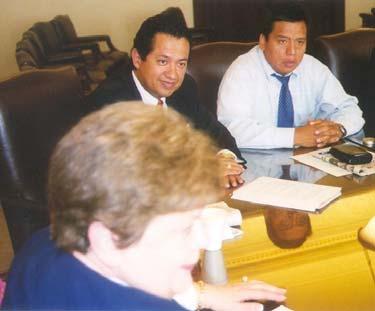
The Office of Hispanic Affairs advises the governor on issues that impact the Hispanic community. The office works in conjunction with the Hispanic Advisory Council to assess the responsiveness of state government to the needs of Utah’s Hispanic citizens.
The Office of Hispanic Affairs helps increase awareness, access, and participation on issues that impact the community such as Business and Economic Development, Community Development, Education, Health and Human Services and Legal and Justice System. The Latest U.S. Census shows that the Hispanic community is one of the fastest-growing ethnic groups. In the most recent U.S. Census report shows that from 2000-2003, the Hispanic community increased by 26.9 percent. It’s estimated that Hispanics in Utah are at more than 250,000 today.
• Town meetings were held in St. George, Logan, Ogden, Moab, Centerfield, Ephraim, and Wendover to assess the needs of the Hispanic community.
• The Office of Hispanic Affairs, in collaboration with the other state ethnic affairs offices (Asian, Black, Pacific Islander) developed a joint ethnic “Work Plan” to address critical issues affecting the community in the following areas: criminal justice, economic opportunities, education, and health.
• Collaborated with Utah Labor Commission and Mexican consulate with wages and employment discrimination.
• Partnered with Commission on Racial & Ethnic Fairness to provide the first annual Park City Community Connection Hispanic Community Fair.
• Assisted and partnered with “Hispanos Unidos” in opening a resource office in St. George in collaboration with the “St. George Roundtable Group” consisting of law enforcement, community organizations, and the Office of Hispanic Affairs.
• Organized the first Hispanic/Latino Leadership Summit (December 2003) featuring community organizations that provide services to the Hispanic community.
• Participated at monthly meetings of the Disproportionate Minority Committee (DMCC) and reported on-going projects/initiatives.
• Conducted Focus Groups with male and female inmates at the Central Correctional in Gunnison and Draper facility.
• Recognized Don Salazar of Precision Time as the 2003 Hispanic Business Owner of the Year. Ogden resident obtained $30 million contract with SBA.
• Obtained $20,000 Grant from American Express and Zions Bank to provide Financial Literacy workshops for Hispanic community.
• Met with Hispanic parents and students at Snow College, Cedar City, St. George, Moab, Ogden, Logan, Wendover and Salt Lake County to discuss education opportunities in high school and higher education.
• Organized GIFT conference in Wendover, Utah in June 2003.
• Collaborated with the Health Department in promoting CHIP, Medicaid to community. Participated in the Uninsured Week, May 10-12, 2004.
• Supported the University of Utah Hospitals and Clinics in implementing “Bridging the Gap” 40 hour training for volunteer medical interpreters.
• Met with administration of both Intermountain Health Care (IHC) and University of Utah Hospitals to ensure Title VI compliance in regards to Limited English Proficiency (LEP).
• Organized the First “Latino Day” at the Capitol, January 28, 2004. Hundreds of Latino community leaders and members as well as Governor Walker and State Representatives and Senate members participated.
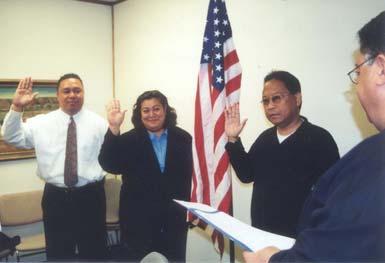
The Utah Office of Pacific Islander Affairs is charged with keeping the governor and state government aware of issues that impact Polynesians, Melanesians, Micronesians, and other Utah residents of Pacific Islander descent.
The Office of Pacific Islander Affairs continues to coordinate efforts to assist Pacific islanders in acculturating and becoming aware of available opportunities, therefore improving their quality of life.
• Data on Pacific Islanders in public schools: In a partnership with the Pacific Islander Advisory Council, the office met with Salt Lake, Granite and the Alpine school districts to discuss the collection of data on Pacific Islander students. We are now are accessing data that was never before available.
• Educational conferences for Pacific Islander parents: The office collaborated with the LDS Salt Lake Utah Stake and the Salt Lake and Granite school districts to hold three separate conferences at the Glendale Middle School and Eisenhower Junior High School to educate parents on the public school system, its curriculum, and the need for parents to actively participate in the education of their children.
• 2004 GIFT Conferences: The office continued with the Governor’s Initiative on Families Today by organizing four separate conferences to recognize the accomplishments of Pacific Islander athletes and scholars in public schools. Forty-eight All-State athletes were recognized at the annual banquet; 338 students were honored for maintaining a 3.5 grade-point average.
• Pacific Islander Advisory Council: The office worked with members of the Pacific Islander Advisory Council, whose members are appointed by the governor to represent the various Pacific Islander communities.
• Joint Ethnic Work Plan (2003-2004): The Office of Pacific Islander Affairs continued to collaborate with the Offices of Asian, Black, and Hispanic Affairs on issues of criminal justice, economic opportunities, education, and health. The office took the lead and was the primary contact on health issues.
• Project Manna: The office, in collaboration with Community Connection Services, continued to implement the final year of the Title II federal grant for destructive behaviors and the second grant from the Utah Commission on Criminal and Juvenile Justice (CCJJ) to provide counseling and parenting services to Pacific Islanders. Thirty-five Pacific Islander youths enrolled in the Thinking Errors classes and 40 parents enrolled in the Parenting classes.
• Pacific Islander Cancer Control Network: This year marked the completion of the third
year and the launching of the fourth year of this five-year subcontract with the University of California, Irvine on a federal grant from the National Cancer Institute. Cancer educational outreaches continued, and a navigation program was started to help increase the screening rate among Pacific Islanders. The first breast cancer booklet in Tongan was published and is being distributed.
• Pacific Islanders in correctional facilities: The office arranged with the Utah Adult Corrections for the Pacific Islander community and church leaders to conduct three separate visits to state prisons to visit Pacific Islander inmates. Cultural programs and inspirational talks encouraged inmates to participate in educational opportunities and other programs in order to establish a firmer foundation for life after their incarceration. The director also visited individually with more than 30 inmates in maximum-security facilities.
• Advocate for Pacific Islander Community: The director serves on several federal, state, county and municipal boards and commissions as an advocate for Pacific Islanders and other ethnic populations in Utah. The director is also working with other Pacific Islander leaders to organize a national forum to serve as a voice of Pacific Islanders.
• Referral Service and Community Resource: The office continued to field inquiries from Utah’s Pacific Islander population and other citizens about Pacific Islander issues. They include: education, health care, immigration, discrimination, gang, youth, domestic violence, substance abuse, cultures, and customs. dced.utah.gov/poly
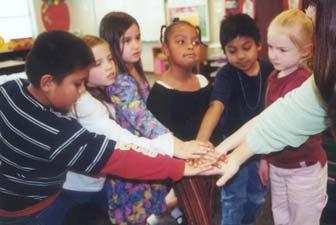
The Utah Martin Luther King Jr. Human Rights Commission is working diligently to promote education and awareness of Dr. Martin Luther King Jr.’s ideals of diversity, equality, and human rights for all.
In 1991, the third Monday in January was designated as a federal holiday to mark the birth of the late civil-rights leader, Martin Luther King Jr. The Utah Martin Luther King, Jr. Human Rights Commission has commemorated this holiday by encouraging all Utah businesses to observe the holiday and value “diversity through unity.”
Over the past six years, in particular, the commission has attempted to increase the awareness not only of the holiday, but also of human rights. Increasingly, media coverage of holiday activities has allowed more Utah citizens to consider the holiday as a day of remembrance.
Through its annual presentation to the Utah Legislature, the commission has increased legislators’ awareness of and support for valuing diversity and the importance of the holiday for all ethnicities, nationalities and people.
Since 2000, the Adopt-A-School program, in partnership with the Utah State Office of Education, has annually adopted at least two Utah elementary schools that have demonstrated a commitment to diversity. During fiscal year 2004, the commission adopted ten schools throughout the state and extended each school’s active participation in the program to six months. The commission has also formed a partnership with elementary school teachers, making them an integral part of the program’s development and curriculum to ensure that their expectations are met. The MLK commission plans to provide schools with community leaders and university students from different ethnicities and cultures who will act as role models for students. They will read to students and discuss the importance of education, respect, and understanding.
The MLK Commission’s Speaker’s Bureau has continued to impact the lives of many Utah citizens, through presentations and training sessions. In 2004, the commission’s Speakers Bureau has expanded its services to include a library series called “Positive Solutions.” The ten-part series is held monthly at the Salt Lake City Library. It focuses on the challenges we face as a community when addressing issues of diversity. Each meeting has five panelists with different ideologies and beliefs such as multiculturalism in public schools, challenges of people with disabilities, trans-racial parenting, and appreciation of religious diversity. The objective is to develop positive solutions to issues that challenge our community and create greater understanding for different ideologies and viewpoints.
Diversity Training is the newest service that the commission provides to public and private organizations. The commission is fortunate to have experienced trainers and facilitators who understand that communication is vital to productive relationships. The commission conducts diversity-training sessions upon request.
dced.utah.gov/mlkcommission
It is the purpose of the division to develop programs that will allow Indian citizens an opportunity to share in the progress of Utah, promote an atmosphere in which Indian citizens are provided alternatives so that they may choose for themselves the kinds of lives they will live, both socially and economically, and promote programs to help the tribes and Indian communities find and implement solutions to their community problems
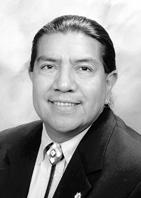 Forrest Cuch Director fscuch@utah.gov
Forrest Cuch Director fscuch@utah.gov
Indian Information Technology (IT) - Smart Sites: The Utah Division of Indian Affairs (UDIA) partnered with the Division of Business and Economic Development in establishing additional Indian IT operations. As a result of this endeavor, there are presently five (5) Utah Smart Sites in operation: 1) Uintah River Technology (Ute Tribe) LLC, 2) NWB Technologies (Shoshone Tribe) LLC, 3) Suh Dutsing Technologies (Paiute) LLC, 4) Montezuma Creek Indian Community (Navajo Nation) NAVASEW, and 5) Skull Valley Band IT Company.
Honoring Our Youth Indian Governor’s Initiative on Families Today (GIFT) Conference: More than 800 youths and their parents attended the GIFT conference May 1, 2004 at the South Jordan High School. At the conference, 771 young people received awards from Governor Walker. Nationally renowned American Indian motivational speaker, Howard Rainer (Taos Pueblo), was the guest speaker at this exciting event. Mr. Rainer challenged the Indian youth to become strong and yield to his message to “Stand Tall” in all issues facing Indian youth and their communities.
Intergovernmental Relations: UDIA continues to facilitate a positive relationship and dialogue between Utah Tribal leaders, the Governor’s Office, and the state of Utah, through annual meetings with the Utah Legislature (Native American Legislative Liaison Committee held December 3, 2003), and with the Governor (meeting held January 26, 2004). UDIA director continues to provide over 120 informational presentations to schools, colleges, social clubs, and various civic organizations, presentations which serve to promote understanding and positive relations among all citizens of the state of Utah.
History Book Project: UDIA secured a $10,000 grant from the George S. and Dolores Dore’ Eccles Foundation to enable the reprinting of A History of Utah’s American Indians. UDIA produced a total of 2,000 soft back copies for distribution by Utah State University Press.
Indigenous Day: More than 100 tribal leaders and their guests attended the Indigenous Day Dinner and Awards celebration November 24, 2003 at the Governor’s Mansion. Governor Walker was present and provided remarks. A total of 10 people were honored for their outstanding leadership and dedication to Utah’s American Indian people.
dced.utah.gov/indian
Indian Education: UDIA continues to place a high priority on education and its impact upon sustainable business development. On September 17, 2003, UDIA presented the Indian Education Task Force Report to the Utah Education Interim Committee. On September 19, 2003, we participated in the Governor’s Summits on Competency-Measured Education to discuss the PerformancePlus Program. UDIA participated in federal initiative “ No Child Left Behind” forums held throughout the state. UDIA has worked closely with Tribal Education Departments (TEDS) in statewide efforts to improve educational opportunities for Indian youth.
Housing: UDIA established the American Indian Housing Council to coordinate housing related activities and opportunities that benefit Utah Indian communities. The Council consists of tribal housing authority directors, state/federal housing representatives, and other groups such as private and non-profit housing organizations. It meets quarterly with monthly executive committee meetings.
Indian Youth: This past year, UDIA was instrumental in identifying and assisting tribes access funding opportunities in the areas of tobacco and alcohol prevention, highway safety, and other programs targeting Indian youth.
• UDIA director serves in an ex-officio role on the Circle of Wellness, Inc. Board of Trustees.
• UDIA director serves in an ex-officio role on the Rocky Mountain American Indian to tribes in the education and business development.
• UDIA director serves in an ex-officio role on the American Indian Housing Council.
• UDIA director serves on the following advisory committees:
• U of U American West Center
• U of U Museum of Natural History
• U of U Graduate School of Social Work
• Utah Intergovernmental Roundtable
• S.B. 67, Designation of American Indian Heritage Month and Indigenous People Day
• H.B. 55, School and Institutional Trust Land Amendments dced.utah.gov/indian
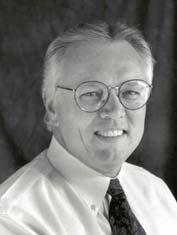

The Utah Arts Council fosters creativity, promotes excellence, and encourages diversity in the arts in Utah. Through its extensive outreach programs, the Council broadens the availability and increases the appreciation of the arts in Utah’s rural, urban and suburban areas, including all of Utah’s diverse communities and ethnicity.
Artist Services provides financial assistance and recognition to Utah artists. In fiscal year 2004, 126 artists submitted applications for Artist Grants, requesting $150,626. The Utah Arts Council awarded grants of $1,091 to eleven artists, a total of $12,001. More than 3,000 artists received ArtOps, a quarterly opportunities newsletter. About 300 artists visited the Artist Resource Center (ARC). Artist Services held three workshops for artists, including one Fieldwork session for performing artists, one grant-writing workshop, and “Creating Your Life”, a professional development workshop about using the creative process in all aspects of life.
In fiscal year 2004, the Arts Education (AE) Program offered regional workshops to all of the state’s 40 school districts through partnerships with the Utah State Office of Education, Utah PTA, Utah Arts Education Association, Utah Dance Education Organization, Utah Music Educators Association, Utah Theatre Association, Art Access/Very Special arts Utah and seven artistic partner organizations. AE awarded 21 residency grants from Manila and Dutch John to Fielding and Cedar City; 14 arts education project grants to schools and community based organizations; and 10 ArtsPartners grants to artistic companies and arts education initiatives. Educators, parents, artists, arts administrators, and non-profit administrators in all 29 counties participated in conferences and workshops.
Continuing programs in FY 04 included the Reading, Arts & Math (RAM) Initiative and the INFINITY Project. The RAM Initiative offers concentrated professional development for teachers to use the arts as vehicles for improved student learning. The INFINITY Project further expanded partnership activities with artistic companies and museums to provide professional development for elementary teachers in dance, music, theatre and visual arts. In a new project, in partnership with the Utah State Office of Education, Repertory Dance Theatre, RirieWoodbury Dance Company, Ballet West and Children's Dance Theatre, the AE Program led an initiative with Rob Horowitz of Columbia University as the primary program evaluator and researcher to document the history of dance education in Utah, study the impact of dance on student achievement, and identify best practices for training generalists in how to teach dance and to use dance as a tool for integration. The Utah Arts Council received $75,000 from the National Endowment for the Arts to support this initiative. Arts Education Program expenditures of $209,401 served 155,724 children and adults throughout Utah.
Frank McEntire Director fmcentire@utah.gov arts.utah.govThe Community State Partnership program provides professional development and technical assistance to arts and cultural organizations through training workshops and board retreats. This year, CSP initiated the Change Leader program, which provided over 1,500 hours of advanced leadership development to 43 participants throughout the state of Utah. In addition, more than 4,400 hours of training was provided through Art of the nonprofit workshops to 148 participants. CSP also administered the Utah Performing Arts Tour, which offers nonprofit organizations the finest performing artists for a concert and community outreach at a subsidized cost and greatly improves accessibility to the arts in small communities. In fiscal year 2004, the Tour offered 6,800 students a free educational outreach, and concert performances in over 30 Utah communities.
The Utah Arts Council Design Arts Program is dedicated to the promotion of excellence in the diverse field of design in Utah. The program strives to help the citizens of Utah see, experience, use and value the art of design that surrounds us every day.
During FY 2004, the Design Arts Program coordinated the second annual exhibition featuring designers in Utah. Ms. Ann Van Ingen, director of the New York State Council on the Arts Design and Capital Projects, served as juror for this year’s exhibition. Ms. Van Ingen reviewed the works of 27 Utah designers and selected eight to be featured in the DesignArts ’04 Exhibition –Design of all kinds at the Rio Gallery in Salt Lake City. These selected designers came from the graphic, toy, furniture, architecture, textile, public art and game equipment design fields.
The Design Arts program initiated a presentation by internationally know artist, architect and designer, Vito Acconci at the Salt Lake Public Library. This presentation was followed by panel discussion with legislators, architects, and others from the community on the value of design and art in our communities.
The Design Arts Program expended $4,361 in state funds and is supported by the National Endowment for the Arts Challenge America Initiative.
The Folk Arts Program documents traditional arts and artists; produces exhibits, festivals, concerts and educational products; and administers grants to encourage the perpetuation of traditional skills and artistry.
During 2004, we produced a poster advertising the Chase Home Museum of Utah Folk Arts, 12 postcards featuring objects from the State Folk Arts Collection and a calendar that explored local celebrations titled “How We Celebrate: Our Heritage, Our Communities and Ourselves.” We embarked on an initiative to better serve Utah teachers by providing a workshop, lesson plans, and enhanced Web content and reached midpoint in our ongoing digitization of original recordings of Utah folk artists from our archive.
We awarded 13 grants to folk and ethnic artists and organizations statewide and added two Navajo baskets, one Navajo woodcarving, a Mexican Day of the Dead sculpture, a Northern Ute drawing enhanced with beadwork, a Uintah Basin style saddle, and a Swiss-style paper cut and Easter eggs to the State Folk Arts Collection. This year the staff was able to secure nearly $9,000 in outside matching funds to help support these and other folk arts projects that served arts.utah.gov
over 4,000 traditional artists and well over 200,000 audience members.
The Grants Program supports arts projects of nonprofit organizations throughout Utah. In fiscal year 2004, the Utah Arts Council awarded $1,035,495 in grants to 200 nonprofit organizations in 51 communities statewide. Attendance figures reported by grantee organizations totals 4.5 million annually.
In fiscal year 2004, the Literary Arts Program of the Utah Arts Council distributed $42,567 throughout the state in grants, awards and other funding, and conducted a total of 61 projects. Of that funding, $17,000 of federal money was dedicated to the Literary Program's Challenge America project for Utah's at-risk youth, "Writing Toward a Better Life in Utah."
The Public Art Program commissions artists nationwide to create site-specific art in and around the public spaces of state facilities throughout Utah. This art, created in collaboration with the community and the facility for which it is being created, enhances and helps build healthy and beautiful communities in Utah. These site-specific artworks, commissioned by the Public Art Program and chosen by the selection committees, can take the form of architecturally incorporated elements, landscape design, glass, textile, painting and/or sculpture. The program is working to build and add to the quality public art collection belonging to the citizens of Utah. During fiscal year 2004, the Public Art Program spent $231,308 on artist commissions and $1,688 on maintenance and conservation of Utah’s public art collection.
In addition to continuing maintenance of the collection, the Public Art Program began, continued or completed projects at:
· Division of Services for the Deaf and Hard of Hearing Community Center, Taylorsville
· Health Sciences Education Building, University of Utah, Salt Lake City
· Utah Valley State College, Wasatch Campus, Heber City
· West Jordan Courts Facility, West Jordan
· West Valley Drivers License Division, West Valley City
· Utah State Archives, Salt Lake City
· Warnock Engineering Facility, University of Utah, Salt Lake City
The Traveling Exhibitions Program (TEP) is a collaborative partnership with museums, colleges, university and community galleries, arts and cultural centers, libraries and schools. In fiscal year 2004, TEP brought 20 exhibits to 46 different institutions throughout the state, including schools, community centers, libraries, colleges, and museums.
The Visual Arts Program preserves and promotes Utah's artistic heritage through the collection, documentation, and exhibition of the Utah State Fine Arts Collection as well as through administration of arts competitions, exhibitions, and fellowships. The program offers artists informa arts.utah.gov
tion and tools to assist them in developing their careers. During fiscal year 2004, the Visual Arts Program awarded two $5,000 fellowships to two Utah artists. The statewide annual competition and exhibition awarded three crafts artists and three photographers $500 each. Artwork from the State Fine Art Collection were on display as follows: 32 pieces in DCED; 59 in the State Capitol; 46 in the Governor's Mansion; 50 in the Glendinning Mansion; 22 in the Scott F. Matheson Courthouse; 22 in out-lying state office buildings, three in DFCM; and 61 with the Traveling Exhibitions Program. The Traveling Exhibition and Visual Arts Programs together expended $167,130 during fiscal year 2004.

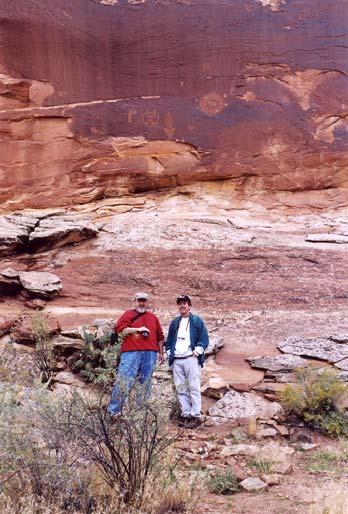 Kenneth W. Brewer and Robert Campbell at the Wolfman panel outside Bluff, Utah.
Kenneth W. Brewer and Robert Campbell at the Wolfman panel outside Bluff, Utah.
The mission of the Division of State History is to preserve and share the past for the present and future.
History is not just books, not just dates, not just one story.
It’s many stories, viewed from many angles: the ancient past and the recent past, the famous and the forgotten—all who have helped make us who we are.
It’s a continual pushing at the edges of what we think we know, an important voice in public processes, and a vital part of communities.
The Division of State History achieves its mission through four main program areas: Antiquities, Historic Preservation, History, and Library/Collections. These programs work with partners statewide to educate; to preserve irreplaceable sites, buildings, and documents; and to develop heritage resources for the benefit of the public.
The following report represents highlights of division activities during the 2003-2004 fiscal year.
The Library/Collections Section collected, preserved, and made available to the public documentary material that would otherwise be lost. The section:
• Added 710 books and pamphlets and 150 manuscripts to the online catalogue.
• Processed 19 large photograph and manuscript collections.
• Accessioned 258 new items.
• Re-sleeved and labeled 126,730 photographs.
• Continued digitizing oral histories, bringing the total to 400.
• Continued to create high-quality scans of its photographs. This year, work began on digitizing the “Classified Photo Collection,” which will add another 4,000 images to the division Web site.
• Made all these resources available to the public.
• Helped seven properties earn state tax credits for historic preservation.
history.utah.gov
The Preservation Section: Helped 19 properties gain National Register listings.
• Administered 67 archaeological permits and issued 19 excavation permits.
• Completed reviewing the paper backlog of archaeological project reports for technical completeness. By year’s end, 95 percent of the documents were entered into the database as “received.”
• Assigned 1,152 new project numbers
• Accessioned 1,611 reports
• Brought the total number of project numbers in the database to 22,999, with 15,605 accessioned.
• Moved forward with development of a GIS database of archaeological sites.
a) All archaeologists for BLM, UDOT, NRCS, and State Trust Lands now have live access to the GIS database.
b) Work continues on Web-based access for consultants.
c) Consultants are now able to scan as they photocopy site records; in time, these records will be made available online.
d) The backlog of archaeological project reports has been eliminated.
e) The division is participating in an interstate Project Tracking System user test phase. This Web-based application streamlines and standardizes procedures.
The Division continued to work with the Bear River Heritage Area, National Mormon Pioneer Heritage Area, Four Corners Heritage Area, and Great Basin Heritage Area. Senator Bennett sponsored the National Mormon Pioneer Heritage Area Act, and the Utah State Legislature passed two bills supporting this Heritage Area.
The research library served 8,208 patrons, including responses to 5,208 requests for information. The library continued to work with the Utah State Archives in planning for the combined research room that will open in late December 2004.
The division added burial data for 37 cemeteries to its burials database. The database contains 400,000 records of Utah burials and remains one of the most popular of DCED’s Web sites. 1,653 sites were added to the historic sites database and the division continued to work to make this data, which now includes 96,702 sites, available over the Internet.
In accordance with the requirements of Section 106 of the National Preservation Act, the division oversaw compliance on 2,910 projects affecting archaeological sites and 364 projects affecting historical sites. Projects include the Nine Mile Canyon Exploration, the expanding road systems in the state, and record oil and gas development.
history.utah.gov
History and archaeological presentations, teaching kits, and exhibits went to 2,910 children at some 50 schools.
The division’s historical architectural consulting helped state, local, and federal agencies leverage funds and make better preservation decisions.
The division continued to help develop the Archaeological Academy at the College of Eastern Utah, Blanding Campus. The academy teaches hands-on archaeological stabilization techniques.
The division produced the Utah Historical Quarterly, the Currents history newspaper, and Utah Preservation magazine (in cooperation with FyveStar.) Publications were distributed to members of the Utah State Historical Society and other adults and students through various outlets.
The division mounted a small exhibit on Salt Lake City in 1912 at the LDS FamilySearch Center located near the Titanic exhibit in the ZCMI Center.
The annual Prehistory Week Open House and the annual meeting of the Utah State Historical Society in September provided learning activities for several hundred people.
The History To Go Web site, http://historytogo.utah.gov, received an average of 39,000 monthly visits. The general Web site received 30,000 visits monthly. A searchable database featuring hundreds of photos and documents of the Conservation Corps in Utah (1933-42) was completed under division direction and is on the division’s Web site. history.utah.gov
The division worked closely with DFCM, State Archives, Division of Fine Arts, and architects and contractors in issues regarding the new Archives building and remodeling of the Rio Grande Depot. The two staffs connected with the reading room—USHS and Archives—worked together to ease the transition.
The division worked with 88 Certified Local Governments. The total number of affiliates is 170. The division also worked with the state’s Native American Remains Repatriation Committee and to implement statutes and regulations regarding repatriation of Native American human remains in Utah.
Communication efforts informed the public of division events, services, and news through news releases and media contacts. The director spoke to hundreds of people about the division programs.
The Board of State History continued as the policy-making board for the Division/ Historical Society and as the Cultural Sites Review Committee.
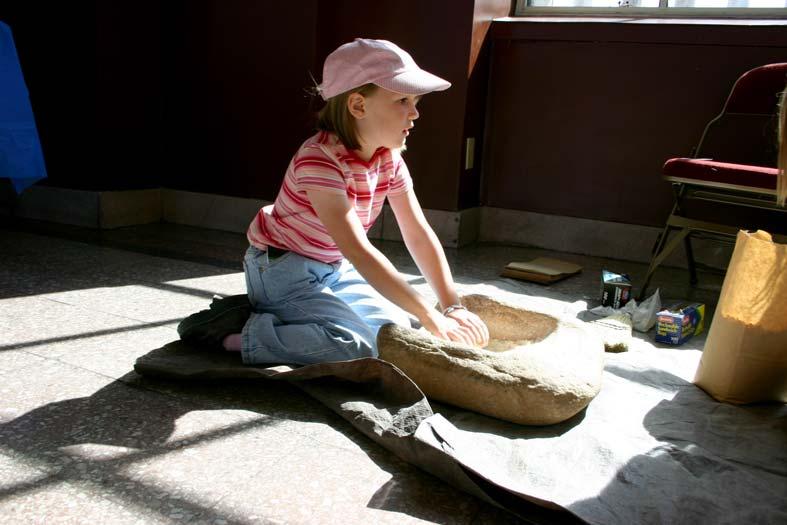
At the Division-sponsored Prehistory Week Open House, hundreds of children learned about archaeology through hands-on activities and demonstrations.
history.utah.gov
history.utah.gov
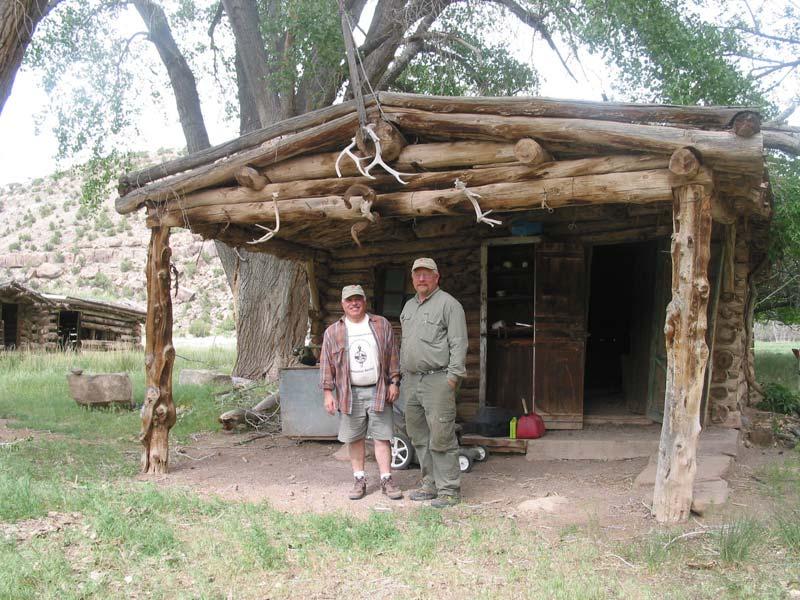
Preserving the archaeological and historic resources at the Wilcox Ranch in Range Creek (acquired by the state of Utah in 2004) became a focus of attention for the Division of State History (photo shows division director Phil Notarianni and state archaeologist Kevin Jones at the ranch).

Grants from the Division of State History helped history organizations statewide preserve, interpret, and share historic and prehistoric resources.

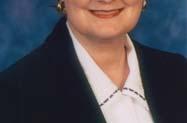
The mission of the Utah State Library Division is to: Develop, Promote and Advance library services and access information for the people of Utah, empowering them to make a living and to enrich their lives.
The Utah State Library strives to improve, expand and communicate library services throughout the state. Also, to ensure all citizens have adequate access to libraries and information resources. The State Library supports libraries in meeting the informational, educational, cultural, and recreational needs of the people of Utah.
The Utah State Library is a major leader in planning and implementing effective information and library services for the people of Utah. It is a vital component of the State's information infrastructure.
Noteworthy accomplishments of the year:
• New libraries are being built across the state. Wasatch County (Heber), Washington County (Santa Clara), and Cedar City all completed construction and opened attractive new library buildings for service.
· The State Legislature amended the State Library Law (UCA 9-7-215), requiring that those public libraries receiving state dollars have an Internet access policy that includes the operation of a technology protection measure (filter) that protects against access to visual depictions that are child pornography, harmful to minors, or obscene.
• The Radio Reading Service for the Blind and Disabled is now all digital. New equipment is installed and working, giving the radio station better capability to serve patrons.
• “Radio Waves-Making Connections for Utah’s Blind and Disabled Community” is a pre-recorded half-hour interview program that airs once a week. During the year 35 segments dealing with issues geared to the blind and disabled were broadcast.
• Members Information Resources have created a Pioneer Online Library tutorial CD available free to all Utahns to help guide them through the quality Pioneer databases.
library.utah.gov
The State Library Division offers three major programs:
The Program for the Blind and Disabled provides public library service for the blind, visually impaired, physically disabled, and the learning disabled. This program is part of a national network of libraries administered by the Library of Congress, National Library Service.
• The Regional Library circulated 267,834 cassette tapes, Braille books, large print books and descriptive videos to 15,847 patrons during 2004. (See http://library.utah.gov/blind.html for more information.)
• The Regional Library benefited from more than 54,604 volunteer service hours. This is equivalent to 27 fulltime employees—more than the total number of staff hours in the program.
• The Regional Library hosted a successful summer reading program for blind and visually impaired children. Sixty participants read a combined total of 45,490 minutes. Many prizes were donated for the readers by various local businesses.
• Patron comments on the Regional Library for the Blind:
“Just wanted to thank you for the great service you give to me and others. Talking books bring joy to me. Wanda Gaz
“We cannot measure how important the tape program has been in our mother’s life. Until her passing she was interested in everything. You have been so helpful in taking care of her needs.” The Family of Phyllis Peers
“Oh Joy! I’m tickled pink over the enhancement list I received listing author’s books. Plus new “yellow-side for return” address card is a wunnerful idea! Thanks to everybody for helping make things easier.” Jewel Marshall
“I cannot thank you enough for your kindness and helpfulness during my mother’s life last year. The books you provided brought her great pleasure and comfort especially when she became unable to enjoy any other activity. Your services and assistance were invaluable to me as I attempted to find diversions for her. Heaven bless you all.” Janet Baum
“Thanks so much for the outstanding job you do. I think I would have gone right out of my mind without the “books on tape”. I’m a little bit more resigned to not being able to read after two years. Thanks again for your kindness.”





library.utah.gov
Lt. Governor Gayle McKeachnie discusses the Voter Information Pamphlet for the blind.Adele Lewis
“Dear Library...Thank you for the Harry Potter book and recorder . I really love them.” (written by 10- year-old Tylar who just recently learned he has dyslexia. This is the first time he could read along with the book on tape.)
· Through the expanded concept and offerings of its highly successful Utah Public Library Institute for Training (UPLIFT), the Division sponsored 109 continuing education events attended by 1,010 library staff and trustee participants from across the state. The event and participant totals were double those of previous years. The training enabled librarians and board members to increase their competencies and commitments to providing excellent library service to their patrons.
· As a follow-up to its earlier grants to individual Utah libraries for information technology infrastructure, the Bill and Melinda Gates Foundation awarded the Utah State Library Division a training grant intended to place an emphasis on the further extension of Utah’s library information technology infrastructure, and the training needed to keep it operating. Forty-three group workshops were held in twelve locations statewide, with librarian participants totaling 382.
· The Division awarded to Utah libraries 131 grants of state and federal dollars totaling $1,361,914. Grant dollars were used by recipient libraries to extend library information technology and access to online information, to build specific areas of the library’s collection, to extend services to minority groups, to provide public programming, or to otherwise enhance services beyond what strained local budgets would support.
· Two new county bookmobiles were constructed and placed in operation with the MultiCounty Bookmobile Library (serving Garfield, Kane and Piute counties), and the Millard County Bookmobile Library. A total of six new bookmobiles (of a projected 14) are now in service. Library patrons in outlying areas will have valued services for decades into the future because of the commitments their counties are making in cooperation with the state. This multi-year project was funded by the 2001 Utah Legislature.
library.utah.gov




Utah



 State Library staff went through an office reorganization to accommodate the DCED Information Technology staff.
Trainer Irene Link discusses communication skills at an UPLIFT Training at the Utah State Library.
State Library staff went through an office reorganization to accommodate the DCED Information Technology staff.
Trainer Irene Link discusses communication skills at an UPLIFT Training at the Utah State Library.
• This year Utah’s citizens searched the premium databases sponsored by Public PIONEER more than 392,000 times, retrieving over half a million items. Public PIONEER: Utah’s Online Library (http://pioneer.utah.gov) added a section especially for senior citizens. The site had 373,000 visitors in FY2004. Public PIONEER premium databases include full-text magazines and newspapers, expanded business and financial information with Factiva, and an auto repair resource. It also offers government information, links to Utah libraries and library catalogs, information about Utah on the Web, and a wide array of Internet resources.
• The UTAHgils Government Information Locator Service currently provides the search engine for http://utah.gov and the business search engine for http://business.utah.gov in addition to providing follow-up referral information for search engine users. The search engine receives more than 4,500 queries per day.
The Information Resources Program continued to catalog, index, and distribute the publications of Utah state government agencies to depository libraries across the state. An additional 896 items have been added to the Division's catalog, which has links to online state publications.
• The Information Resources Program provided to public libraries and state agencies more than 6,800 items from the State Library's collection and more than 12,000 items from other libraries across the state and nation.
• The program offered Internet and PIONEER training workshops for public libraries and state agencies.
• The program distributed more than $200,000 in federal funding under the Library Services library.utah.gov
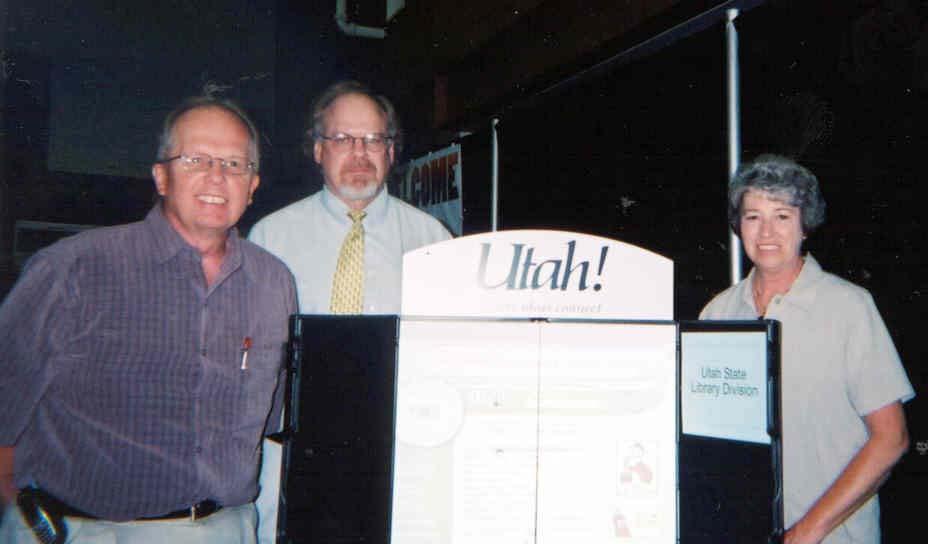
 Representative Michael Noel, Utah State Library Information Resource staff Craig Neilson and Pat Montgomery at the Kanab Technology Expo
Utah State Library Information Resource Manager Craig Neilson explains public Pioneer to Kane County Commissioner and Tribune reporter
Representative Michael Noel, Utah State Library Information Resource staff Craig Neilson and Pat Montgomery at the Kanab Technology Expo
Utah State Library Information Resource Manager Craig Neilson explains public Pioneer to Kane County Commissioner and Tribune reporter

